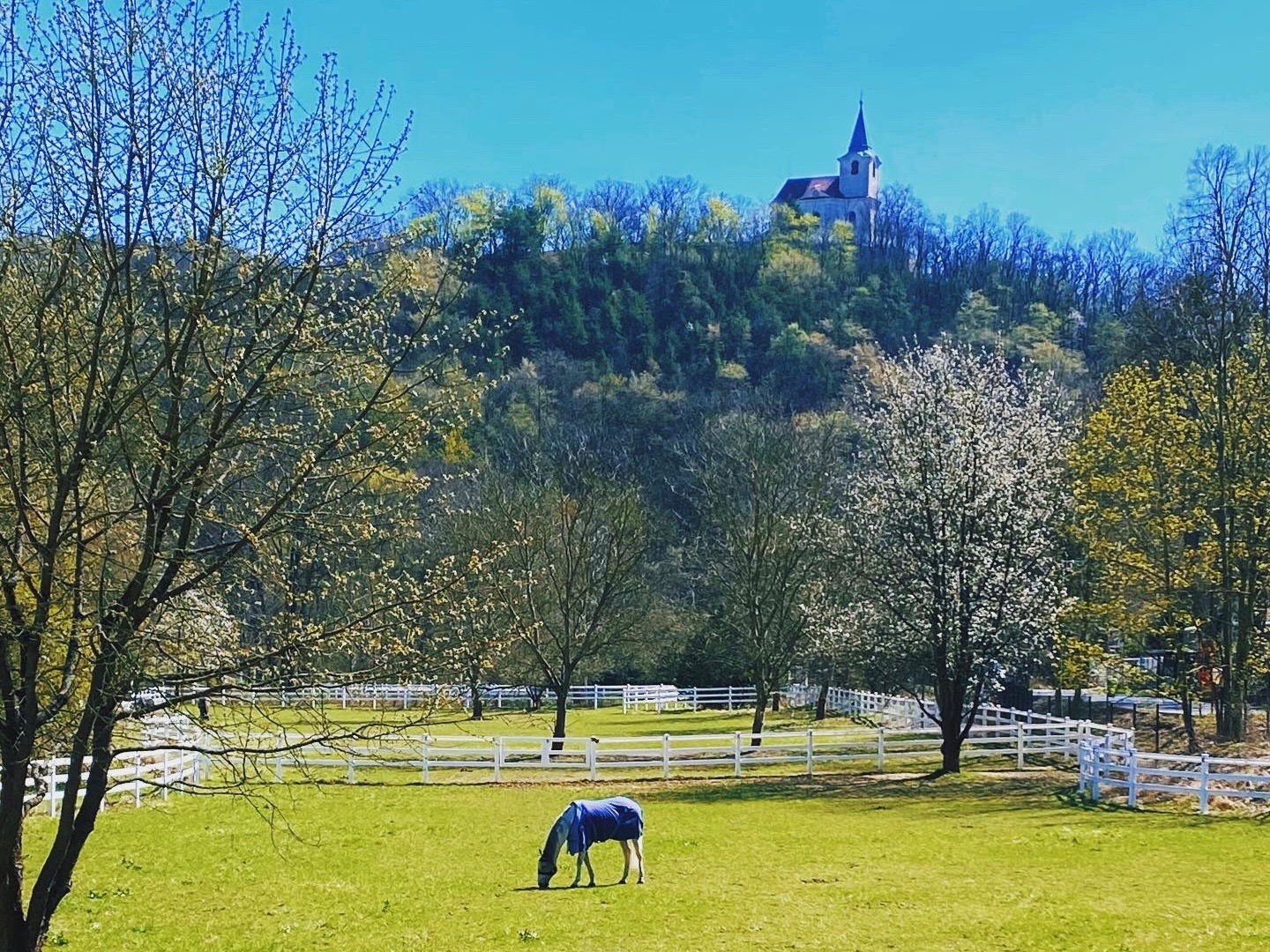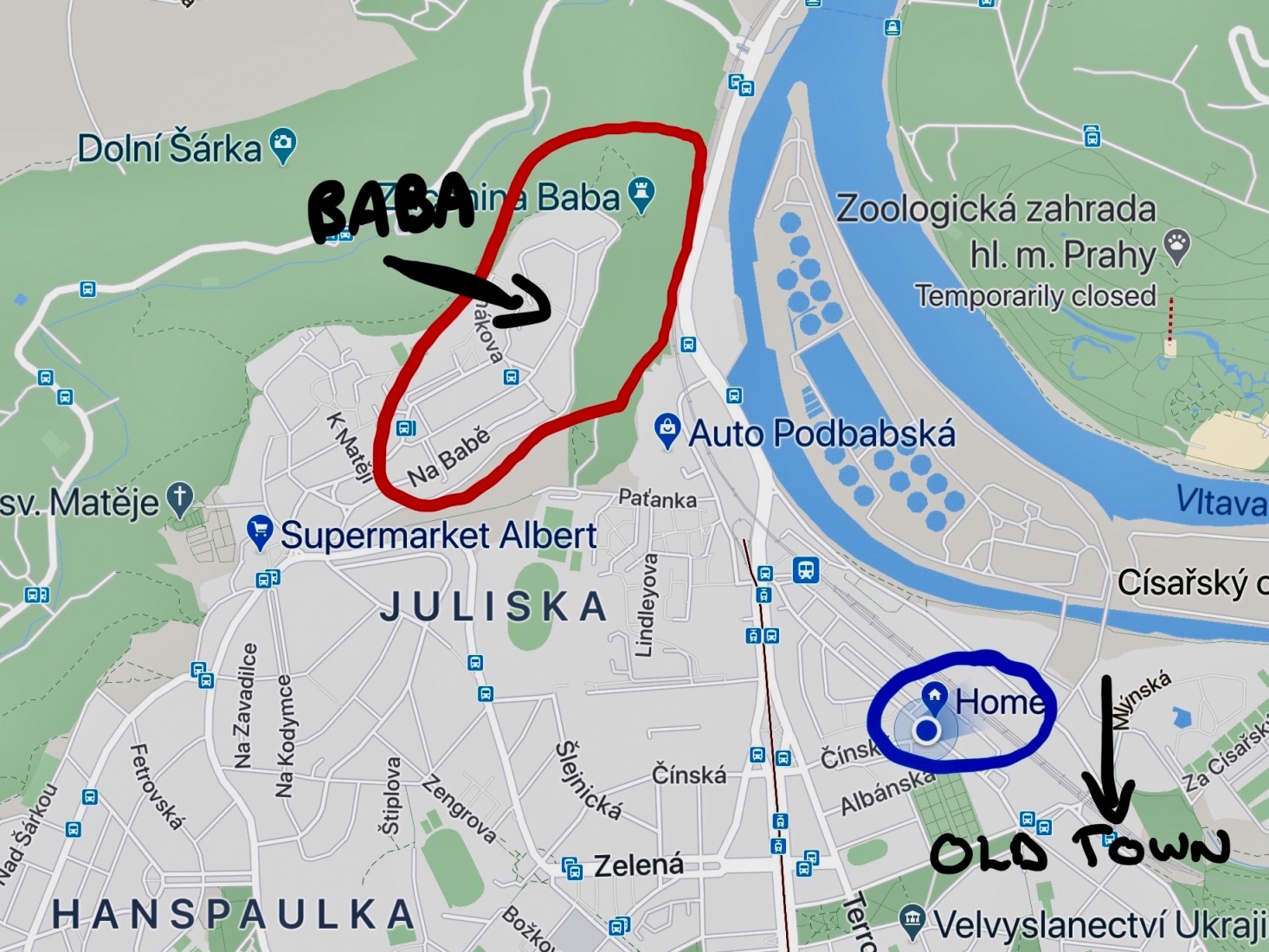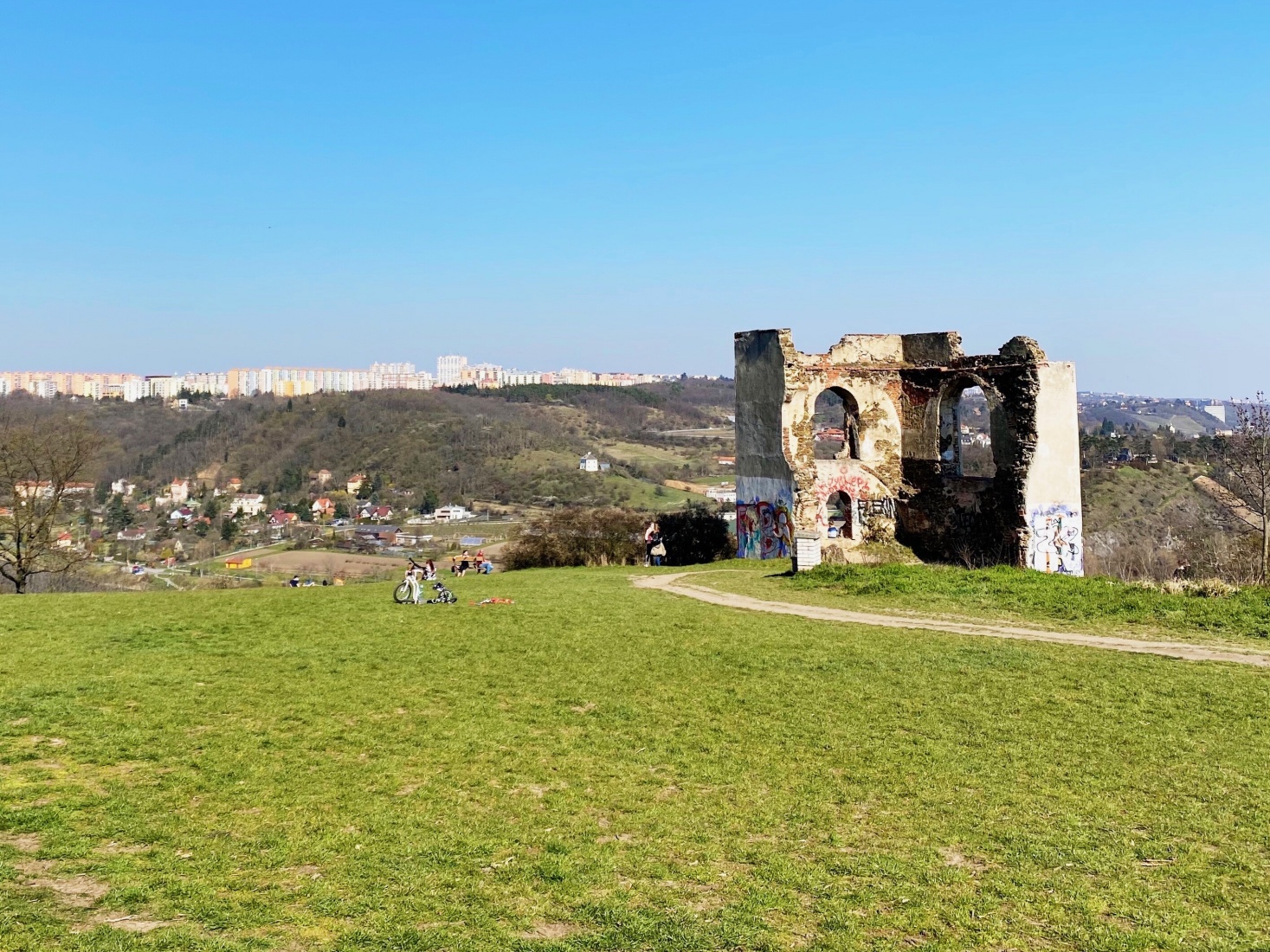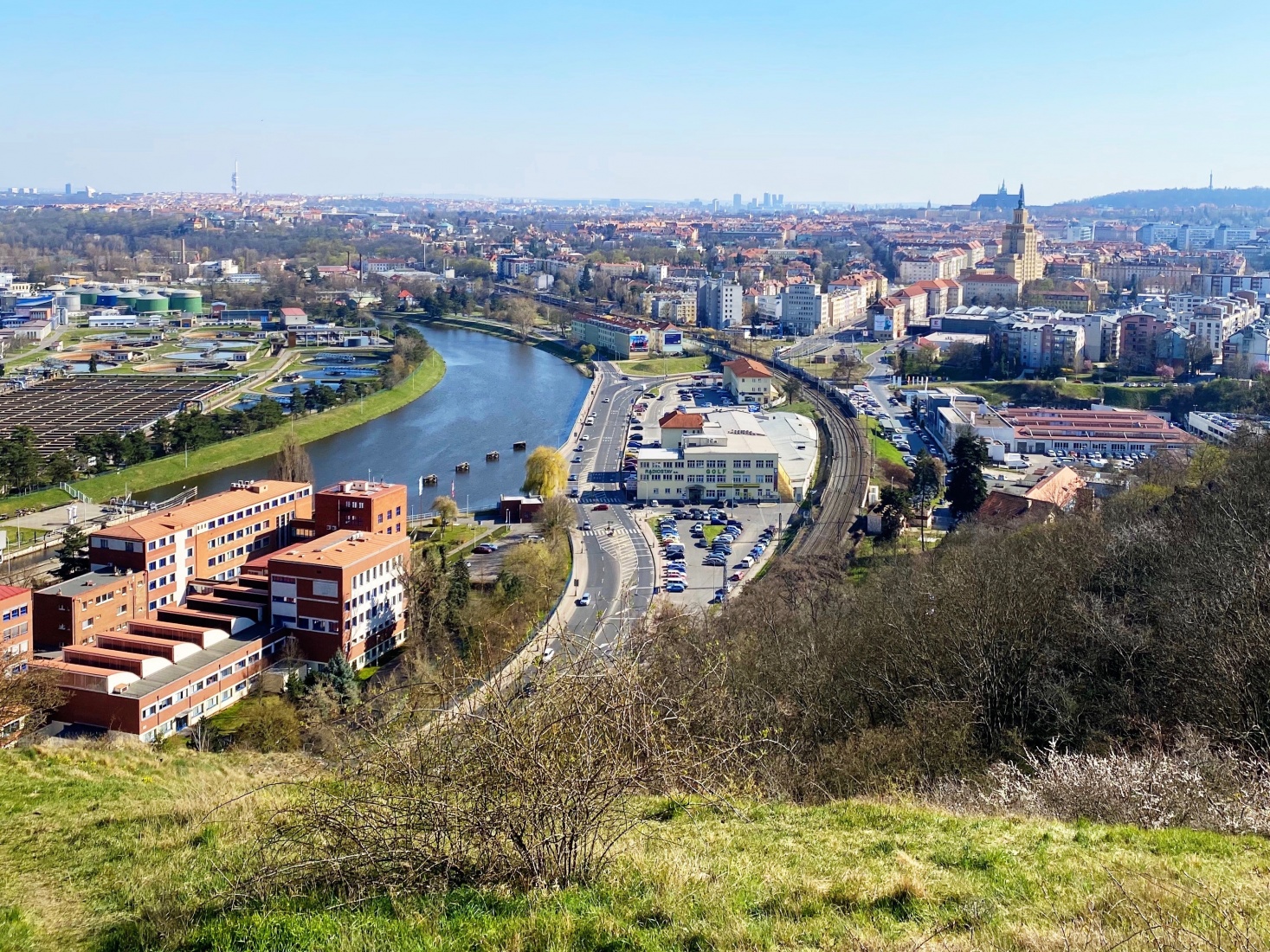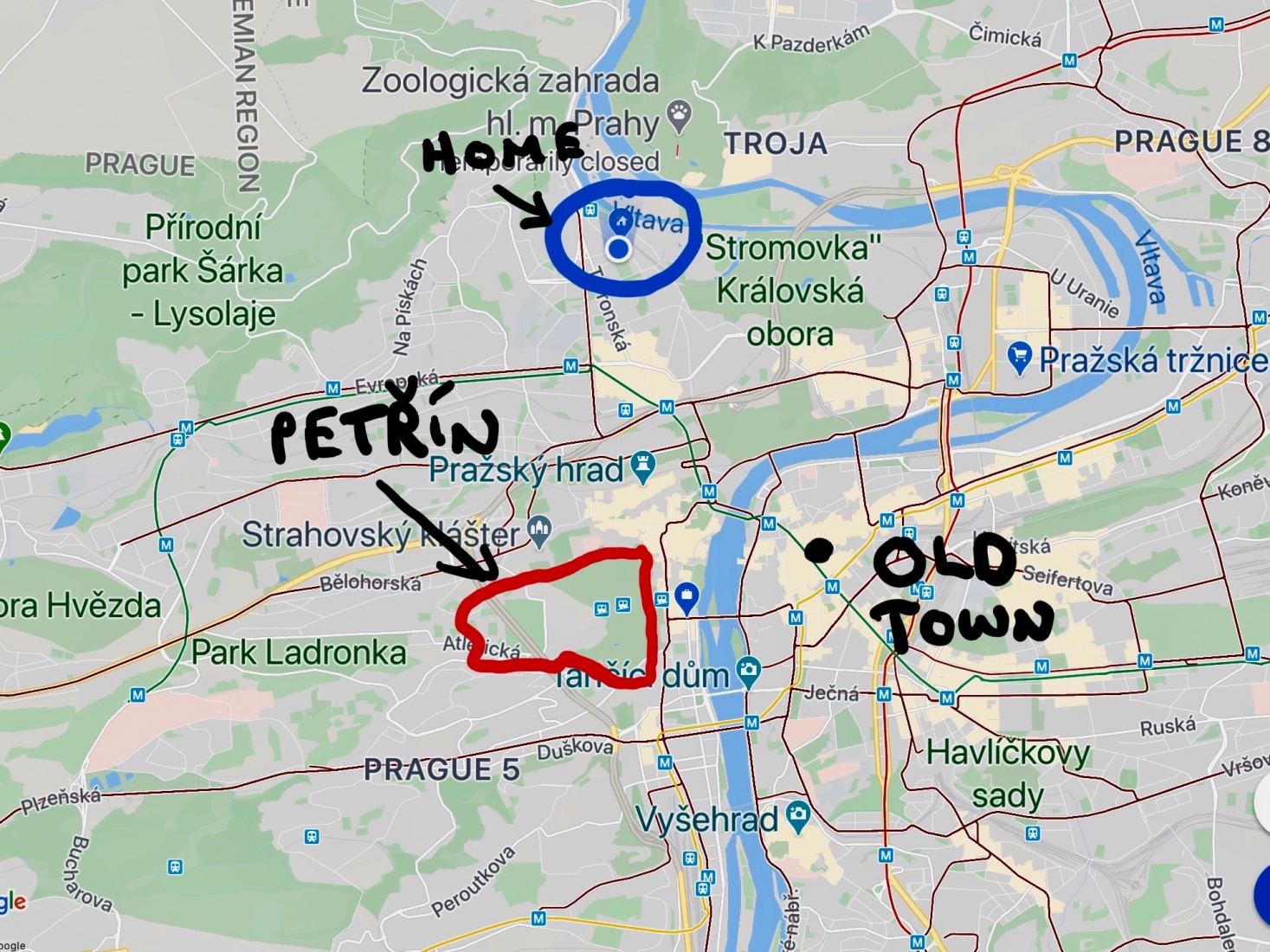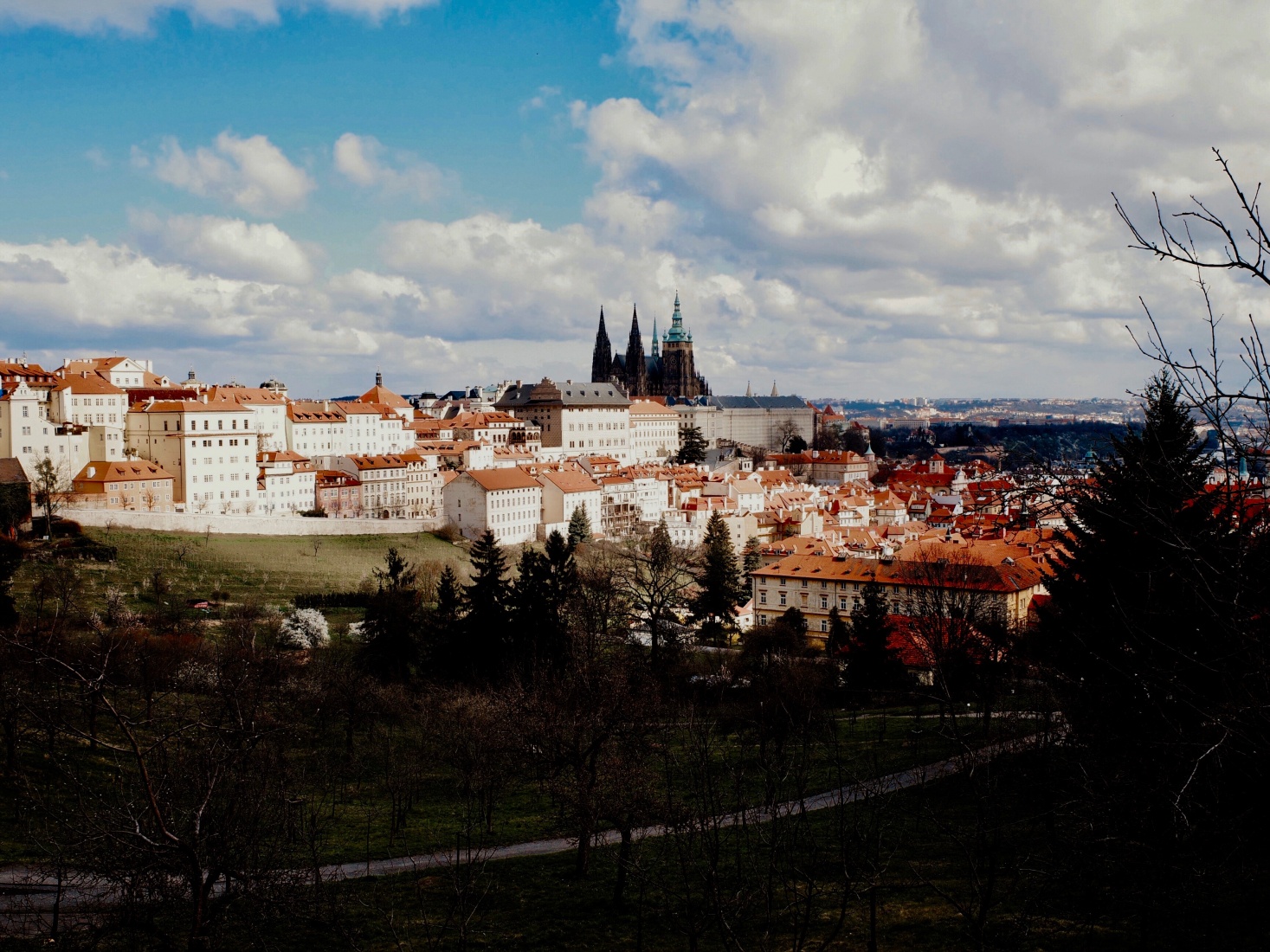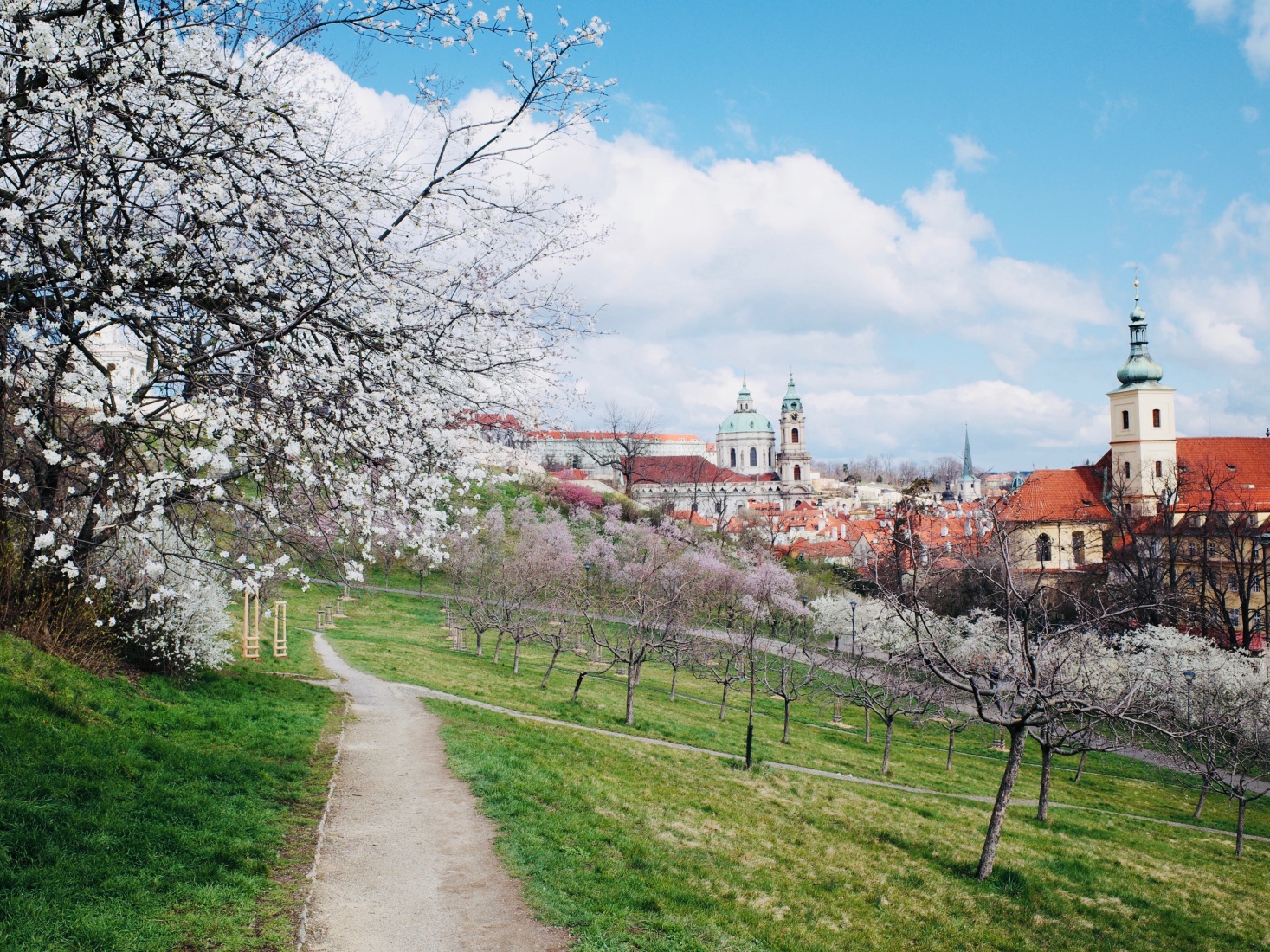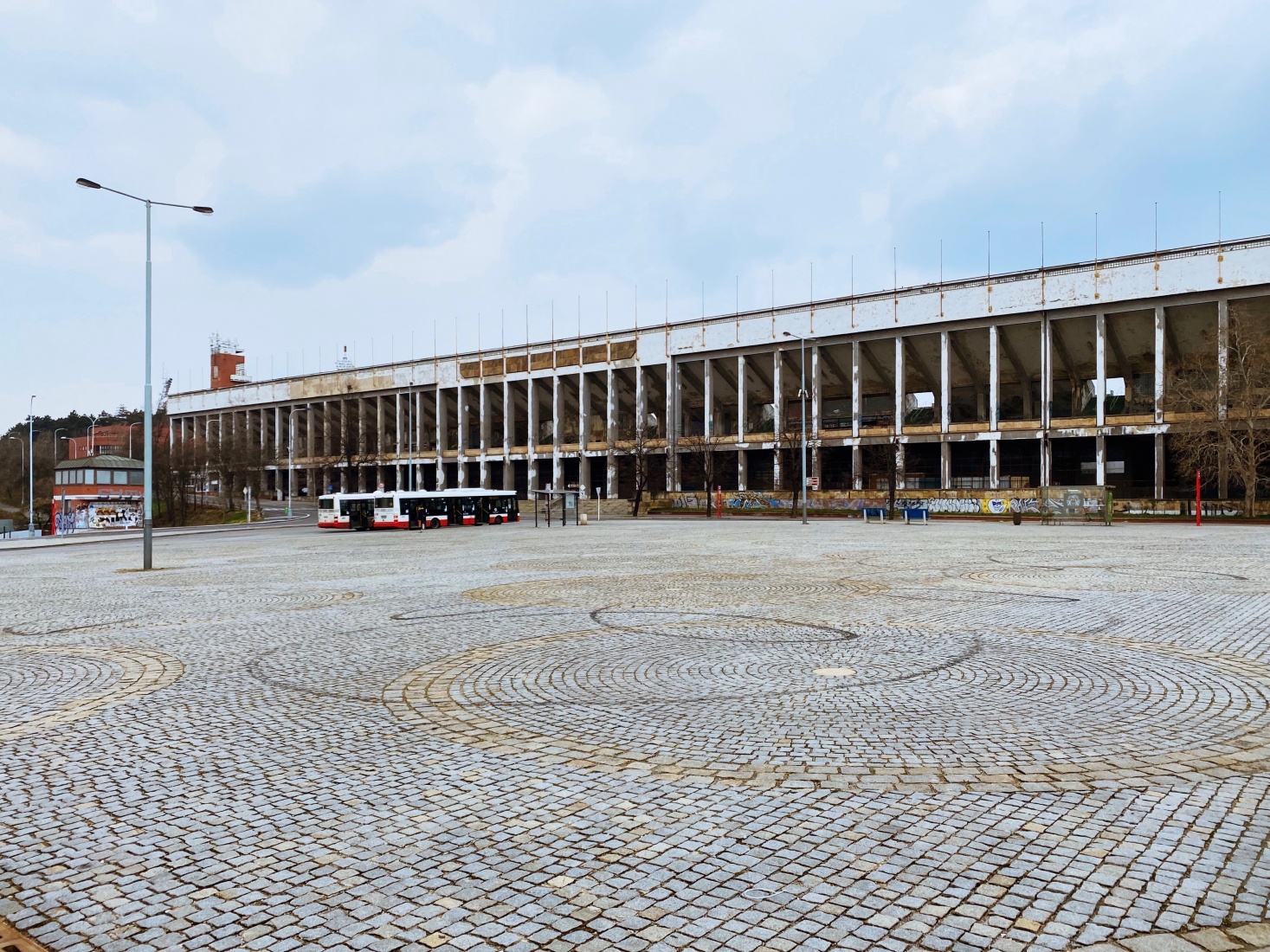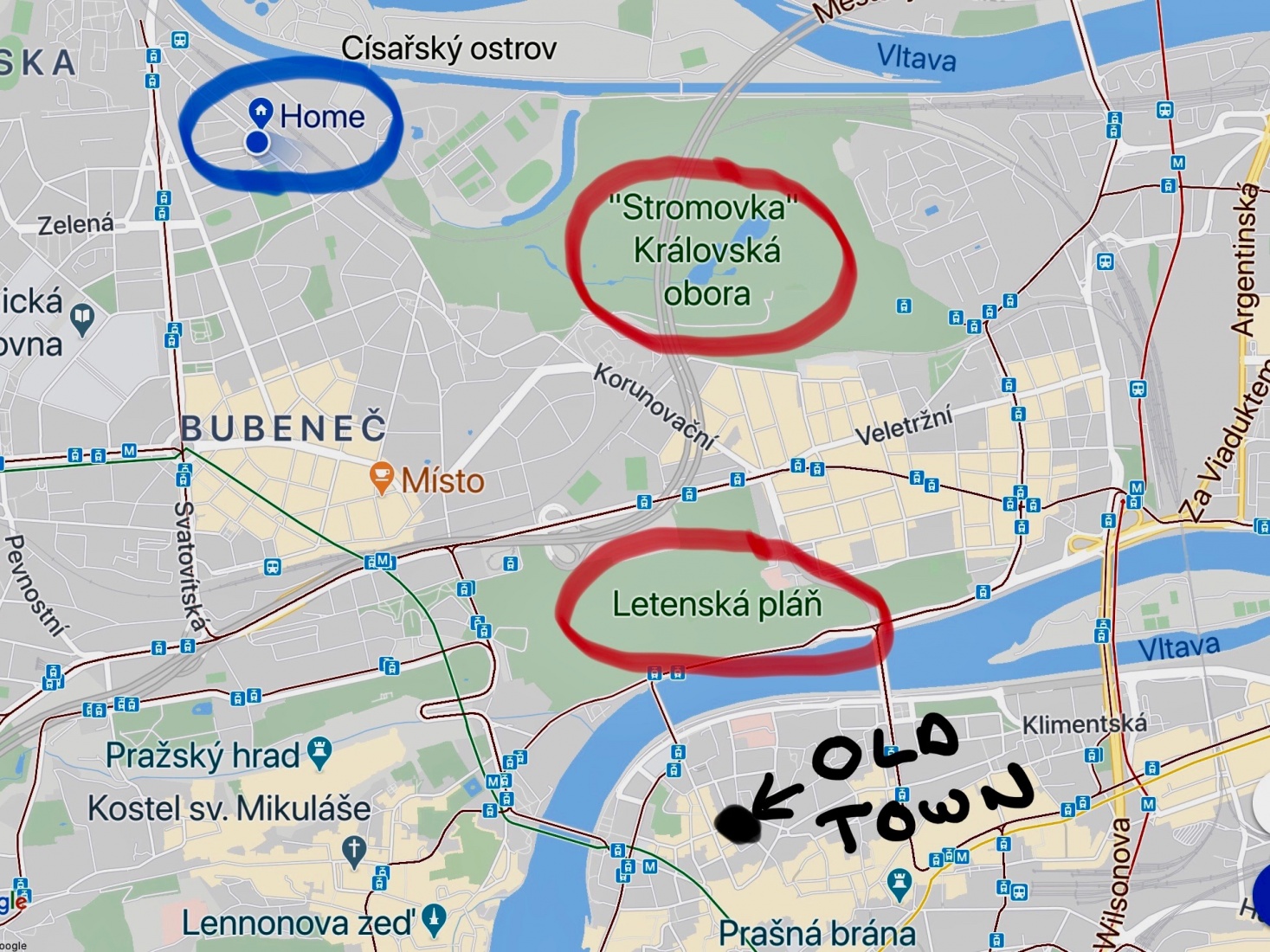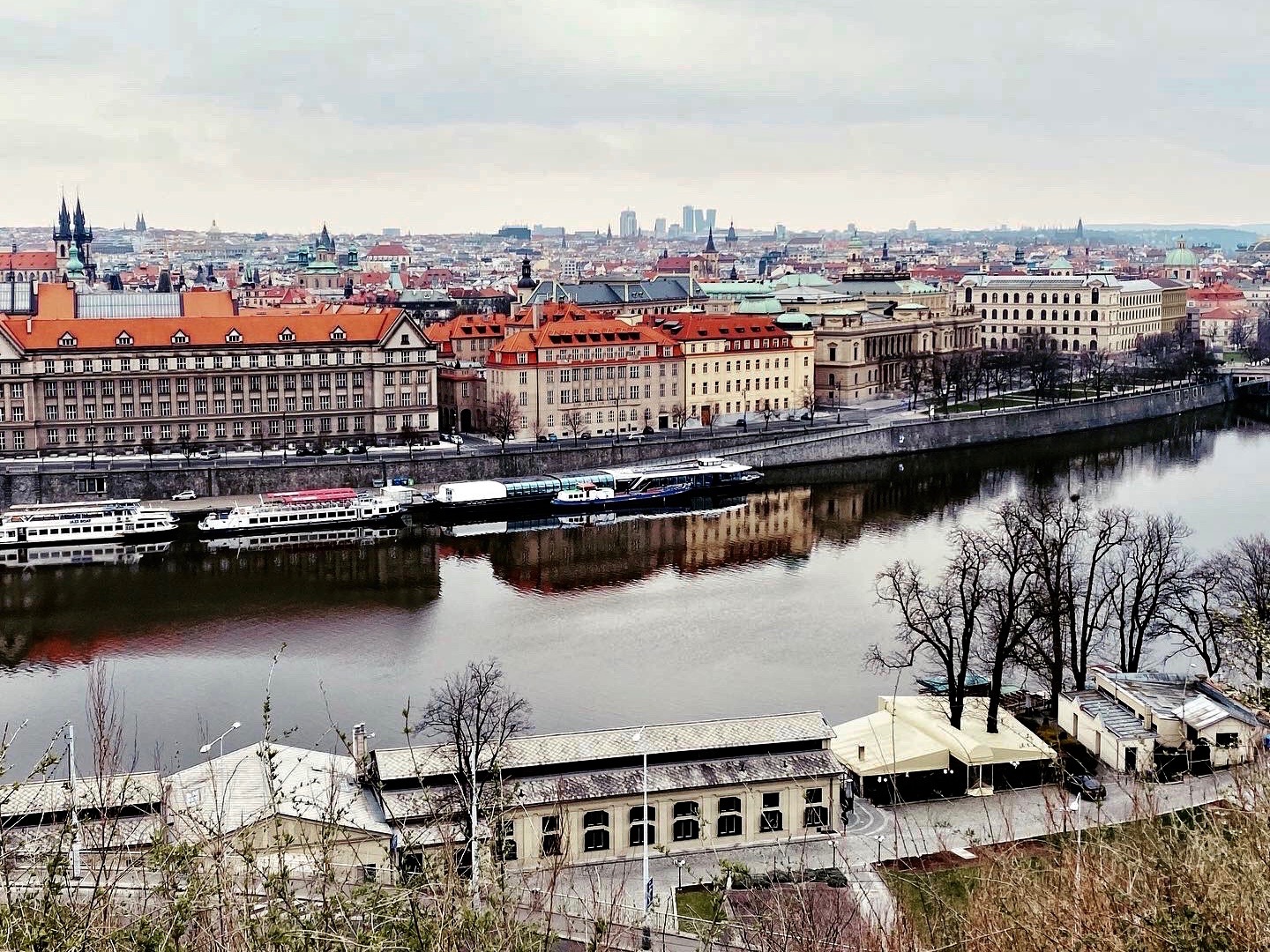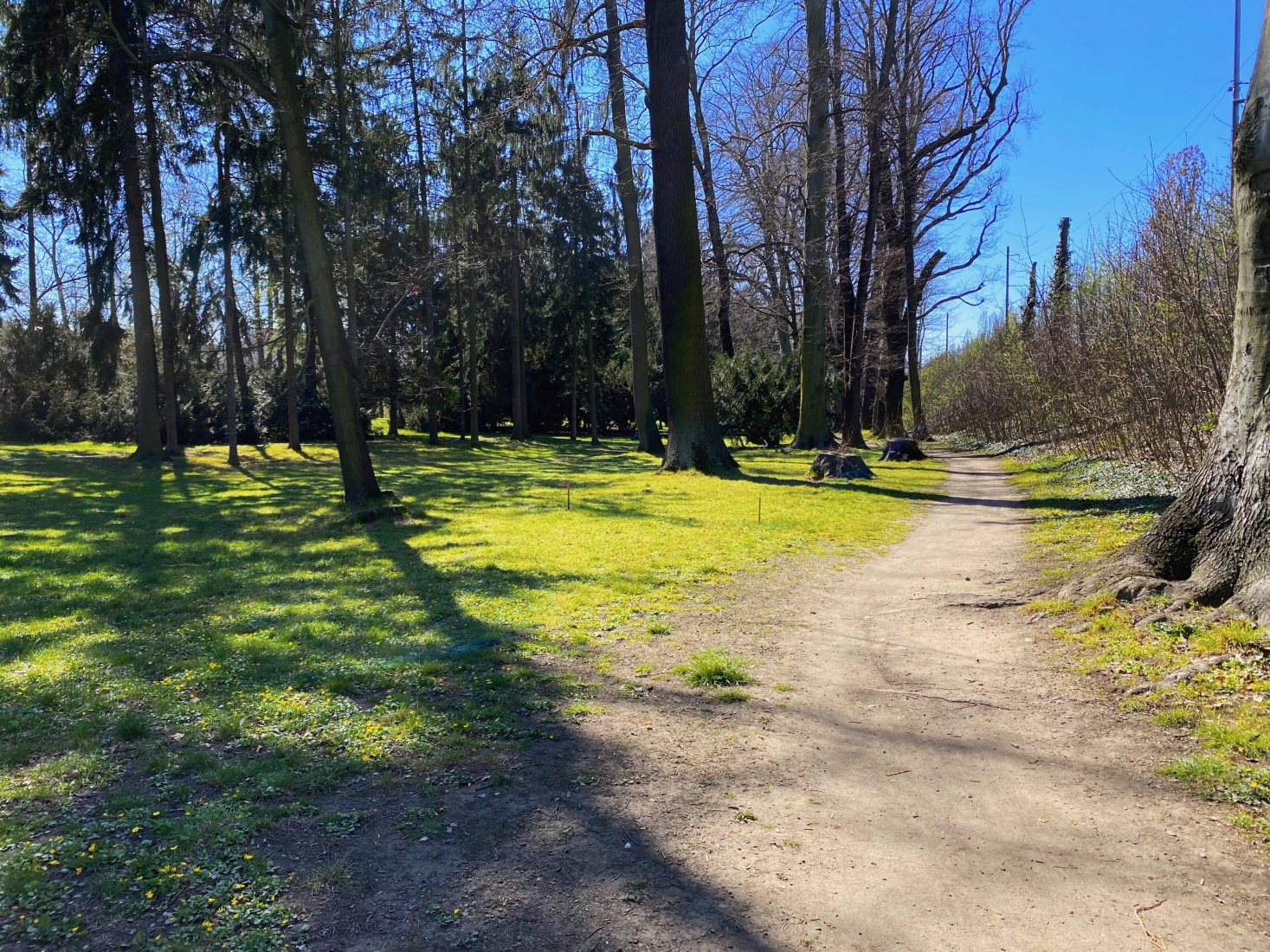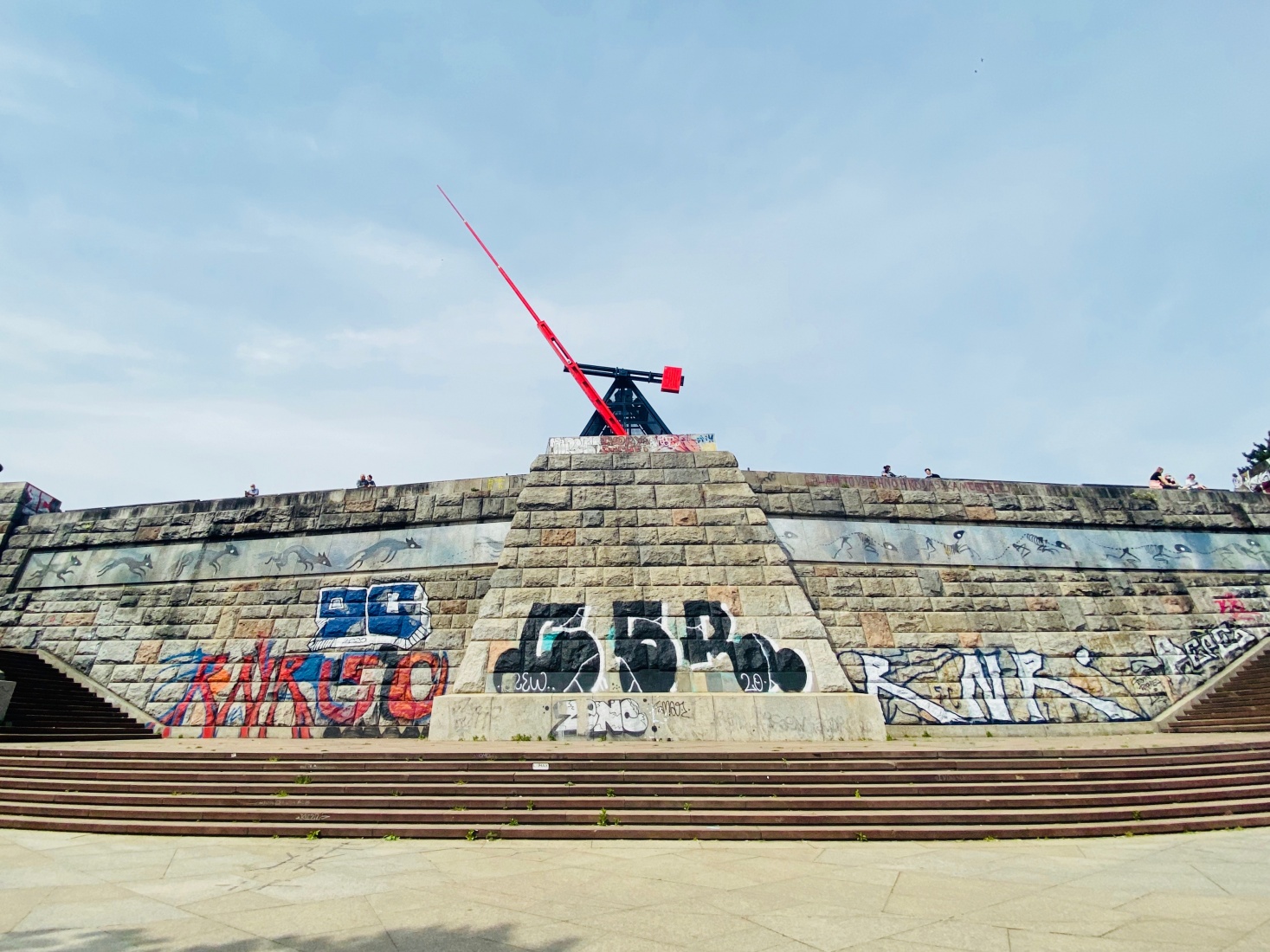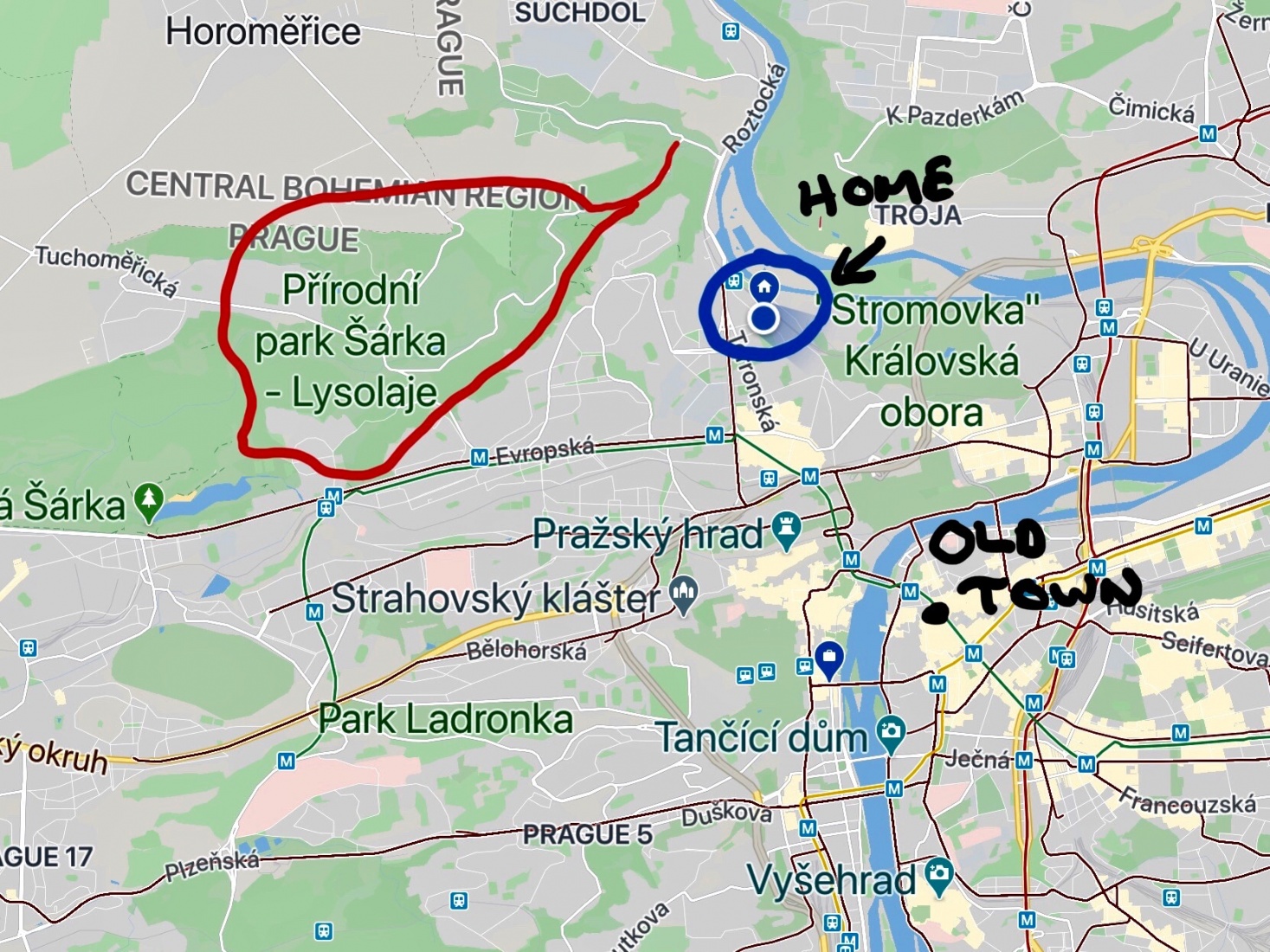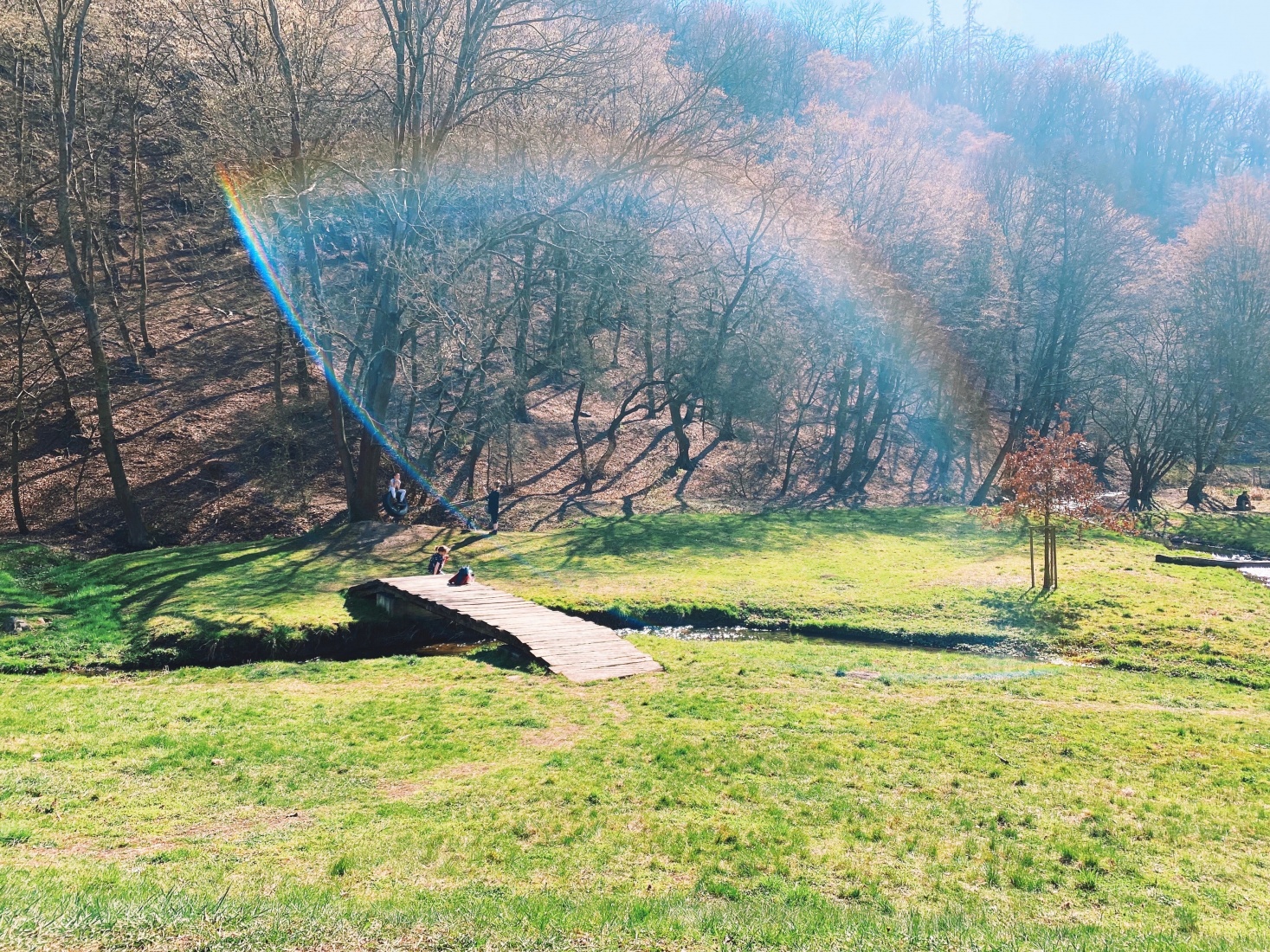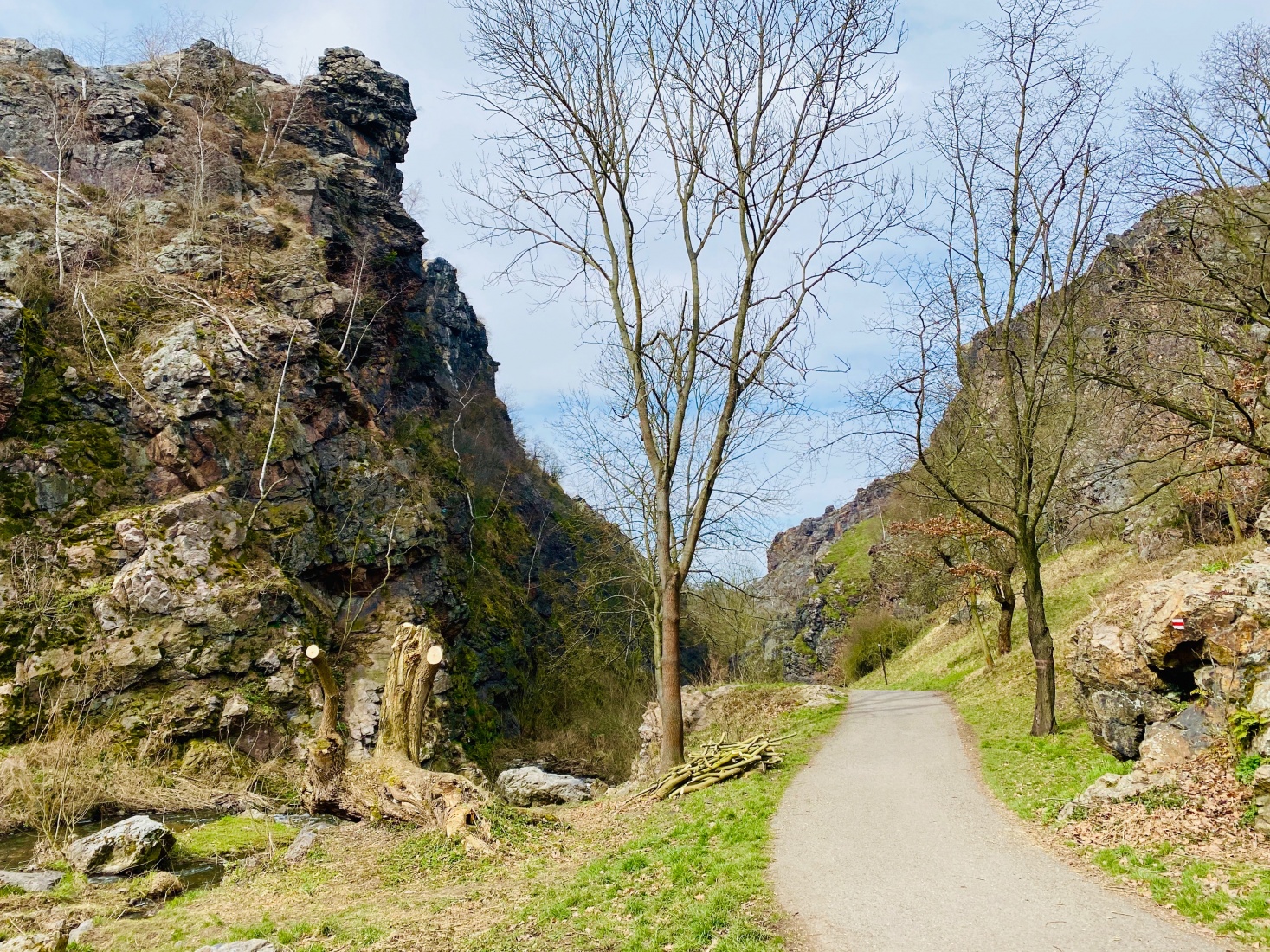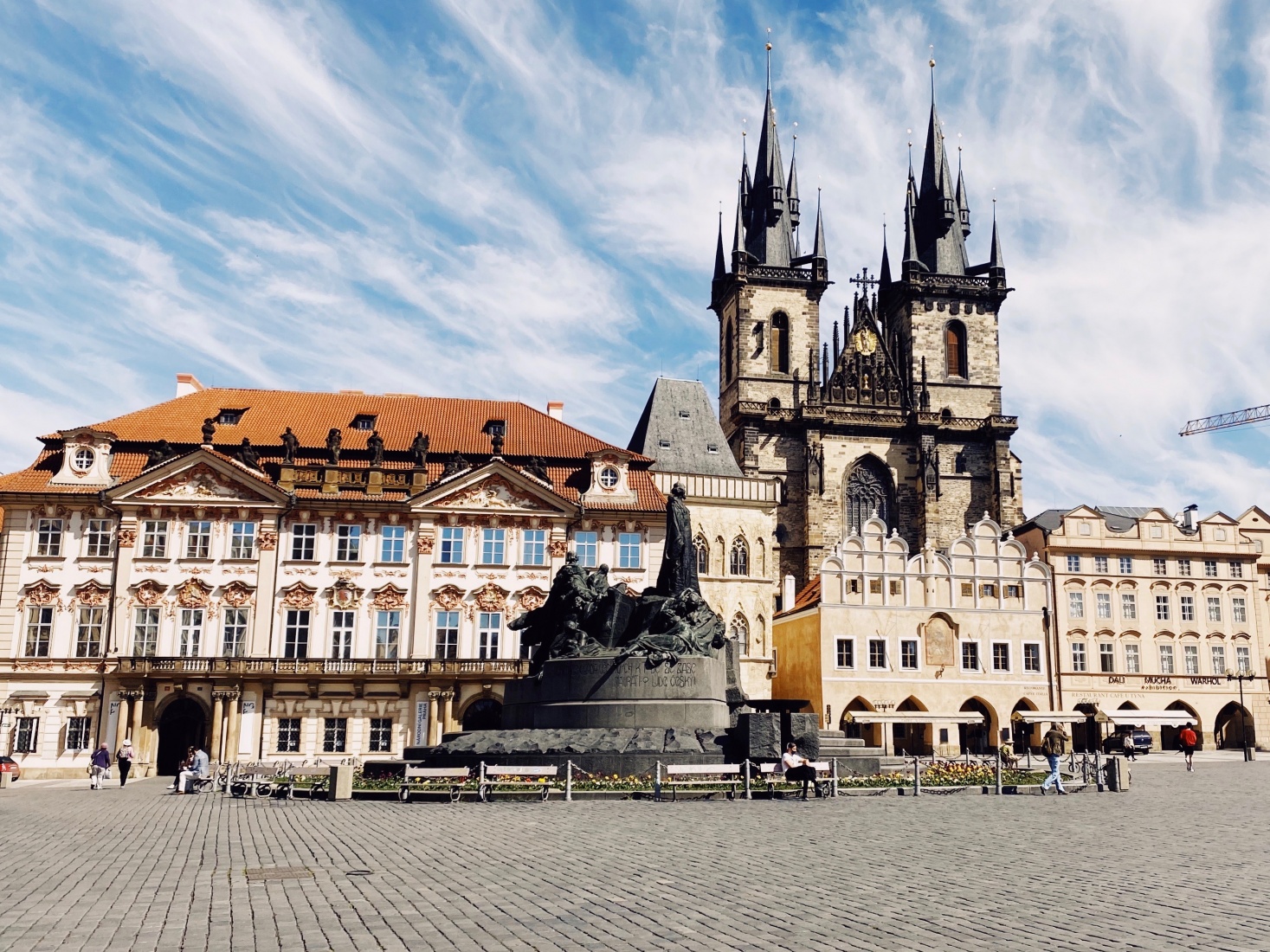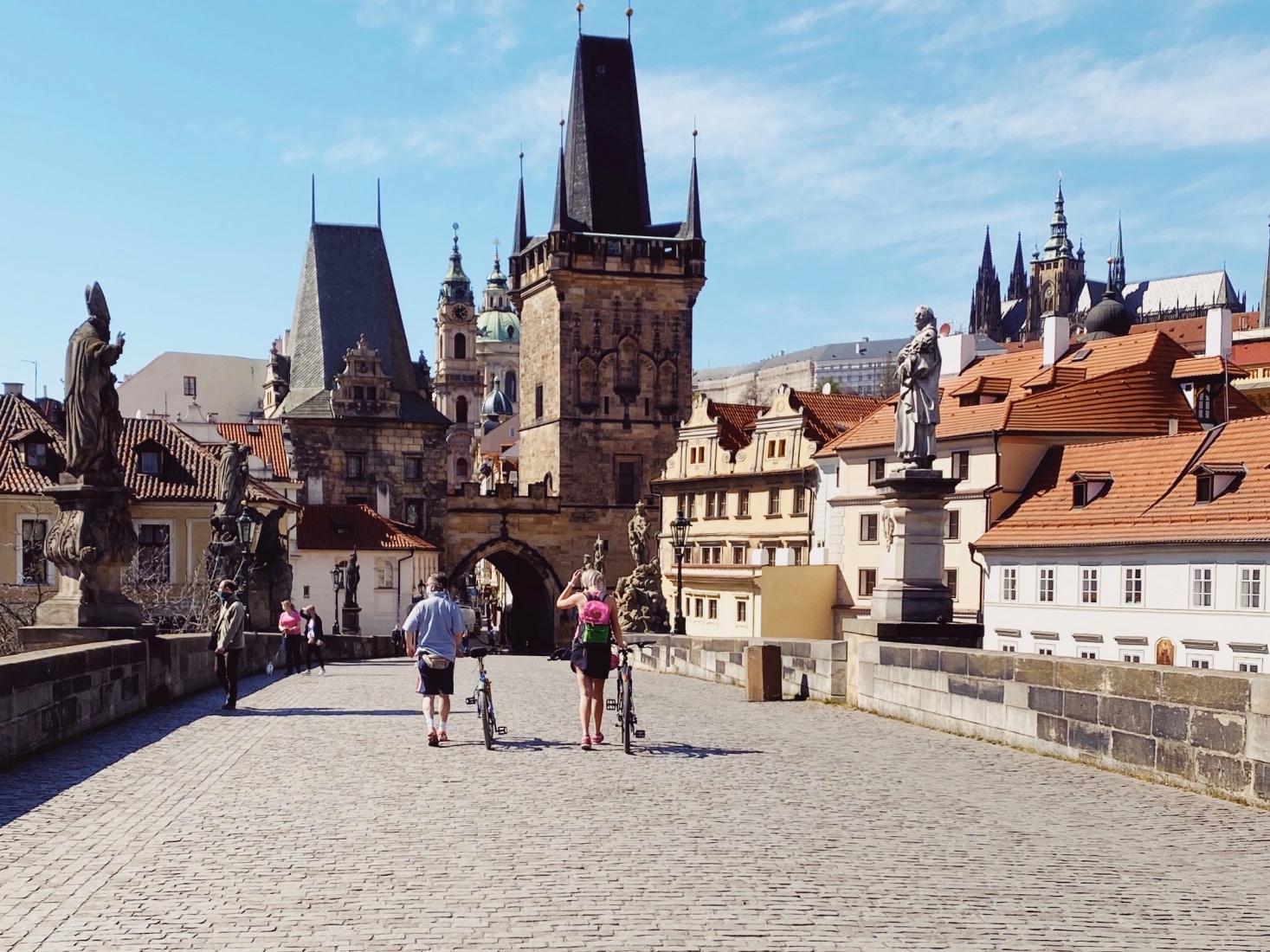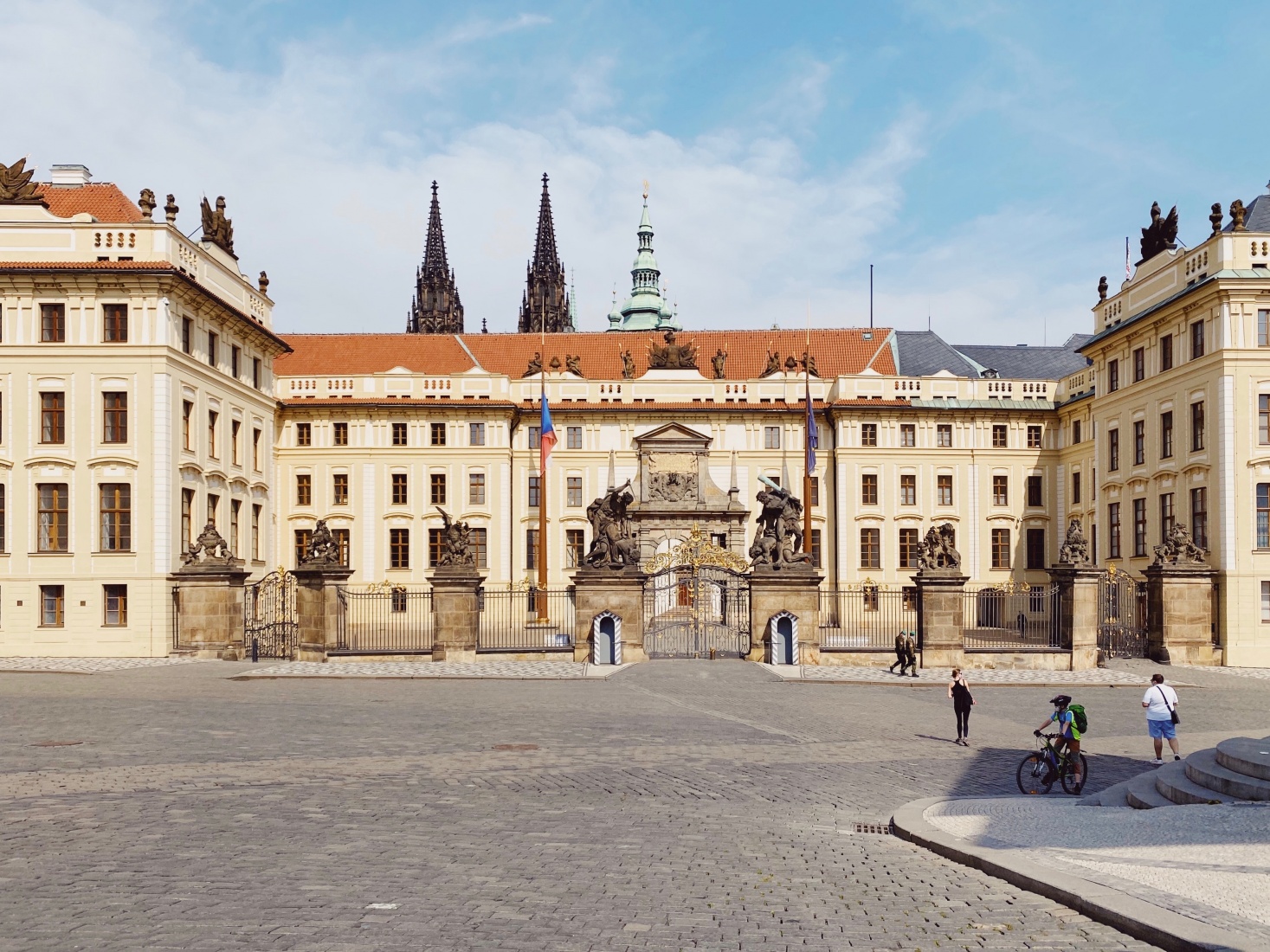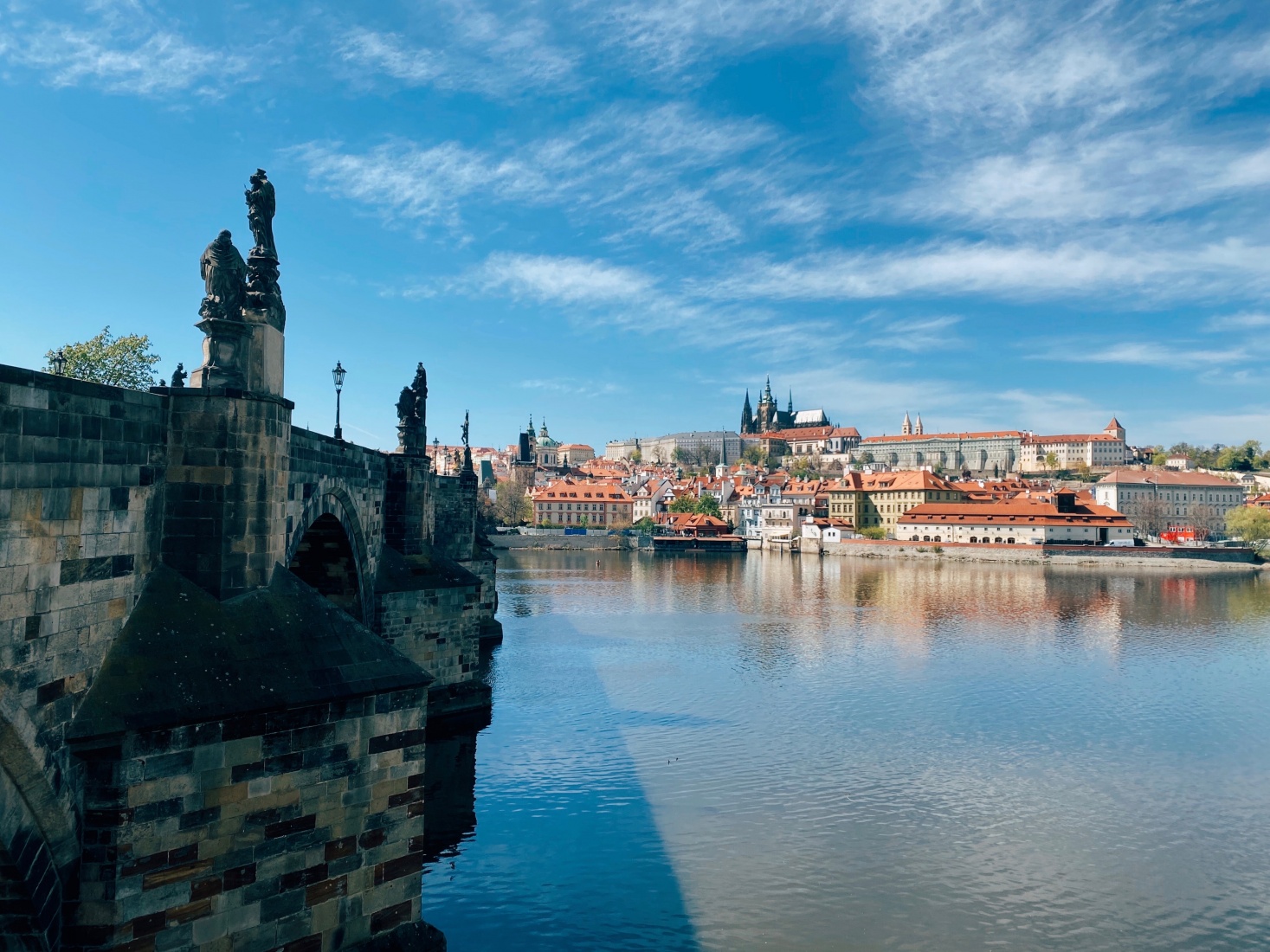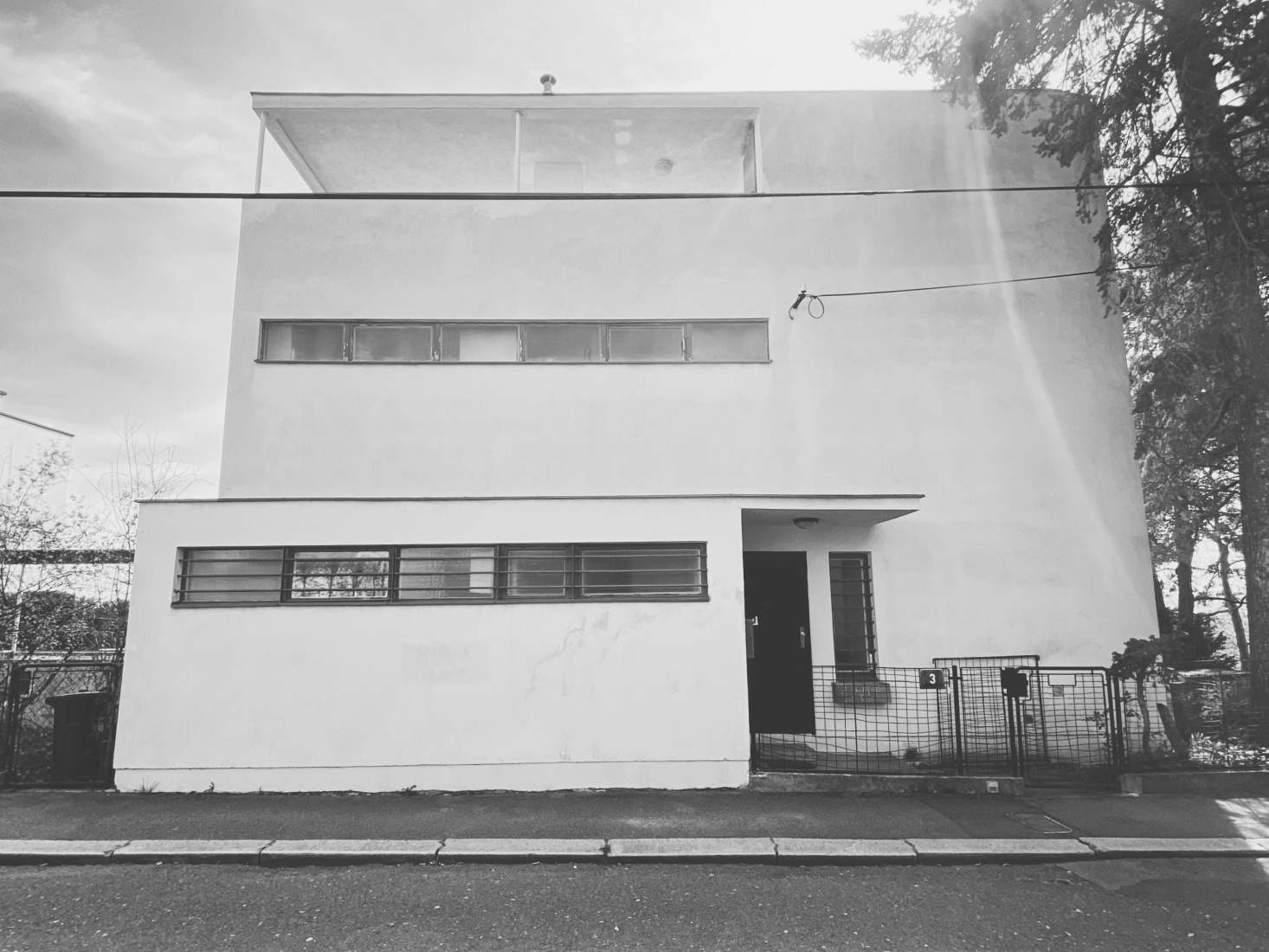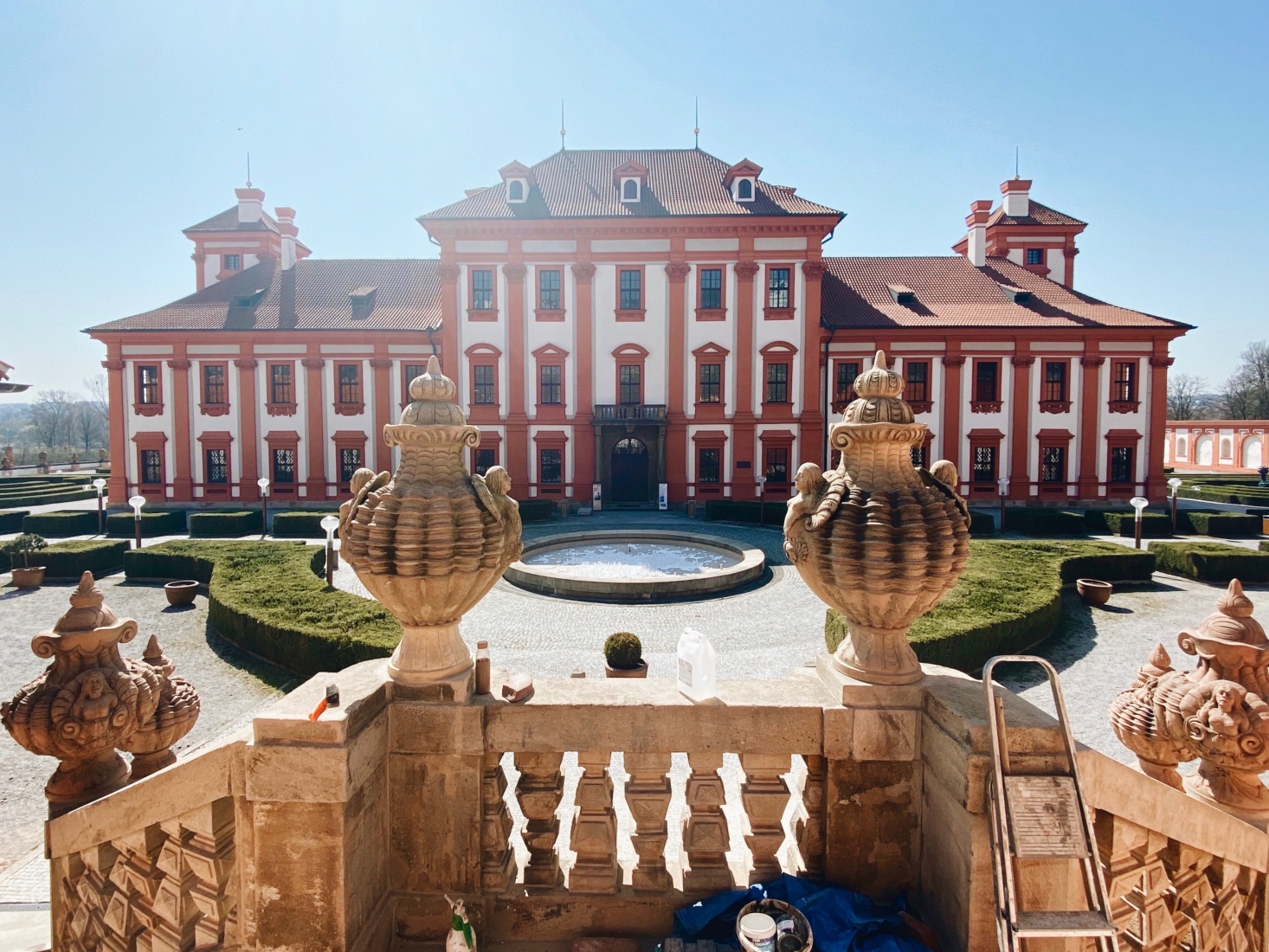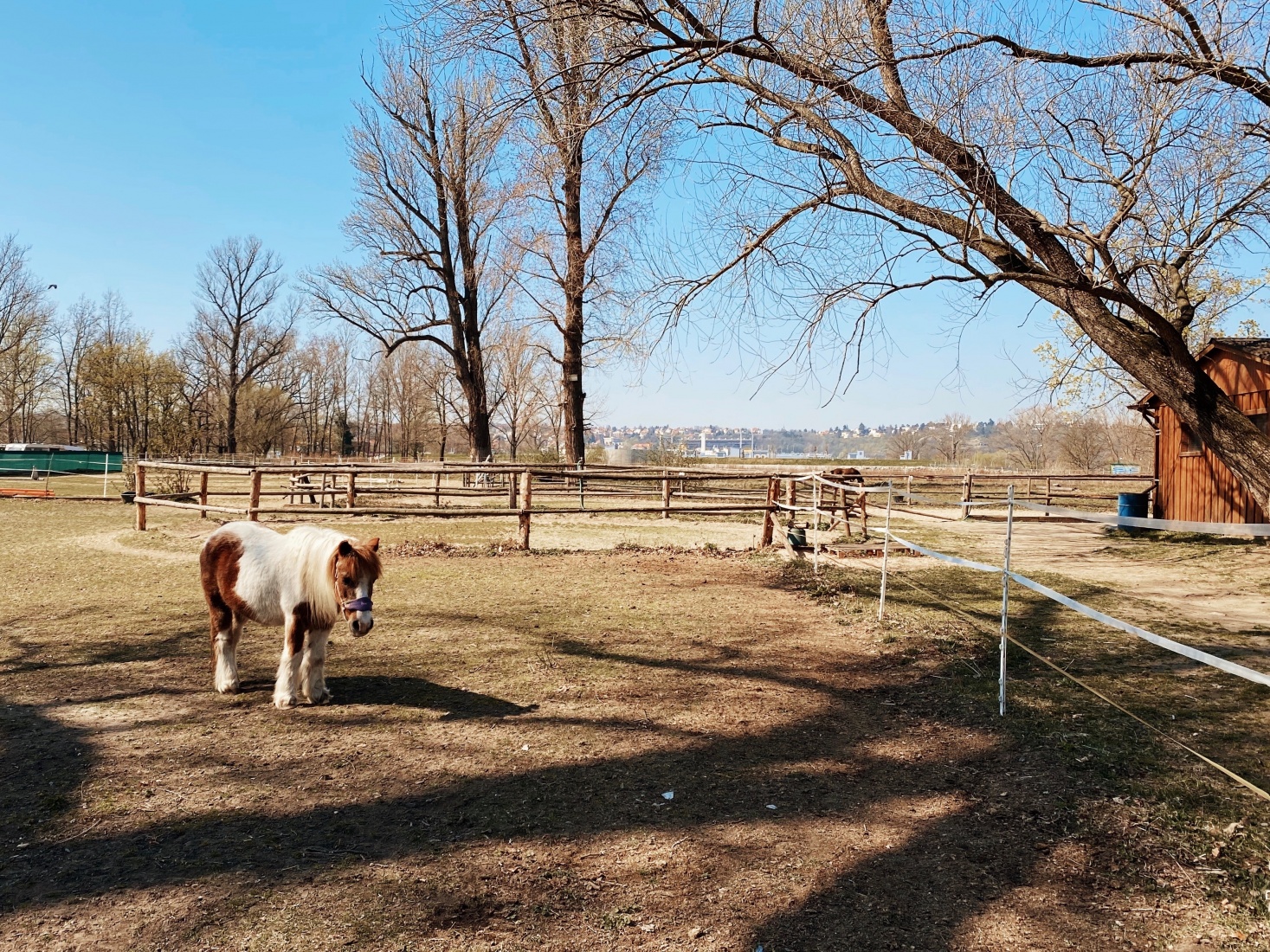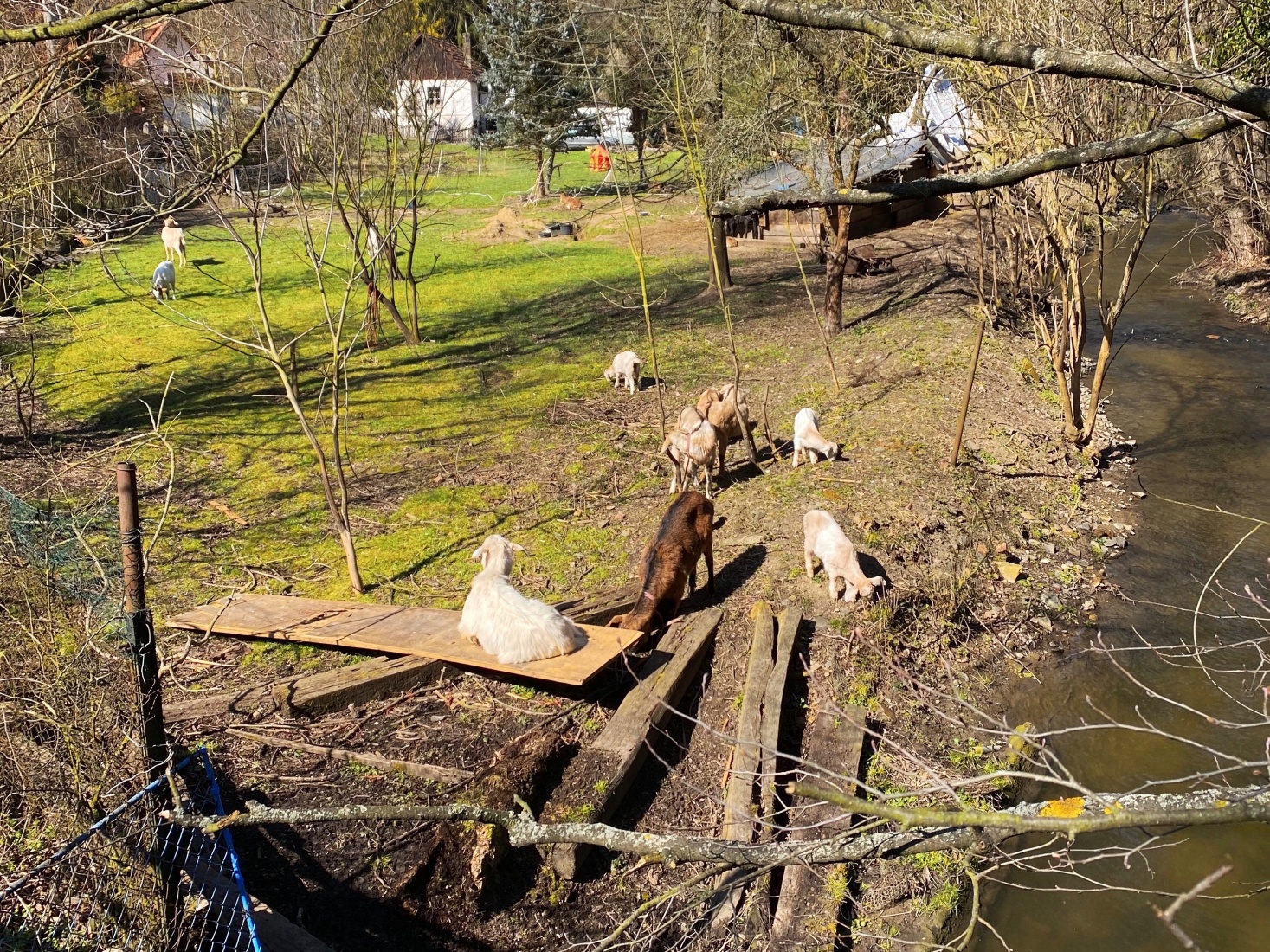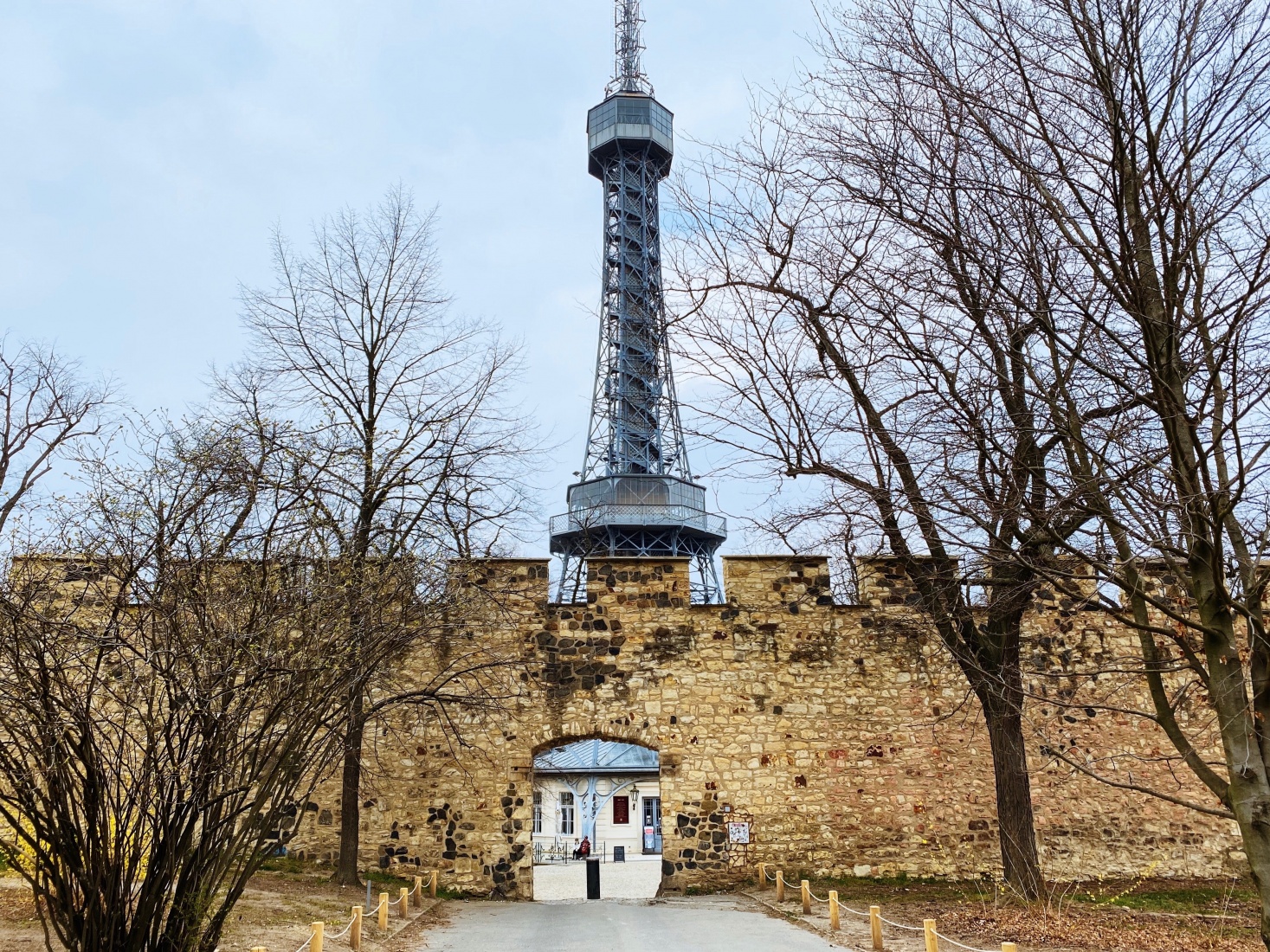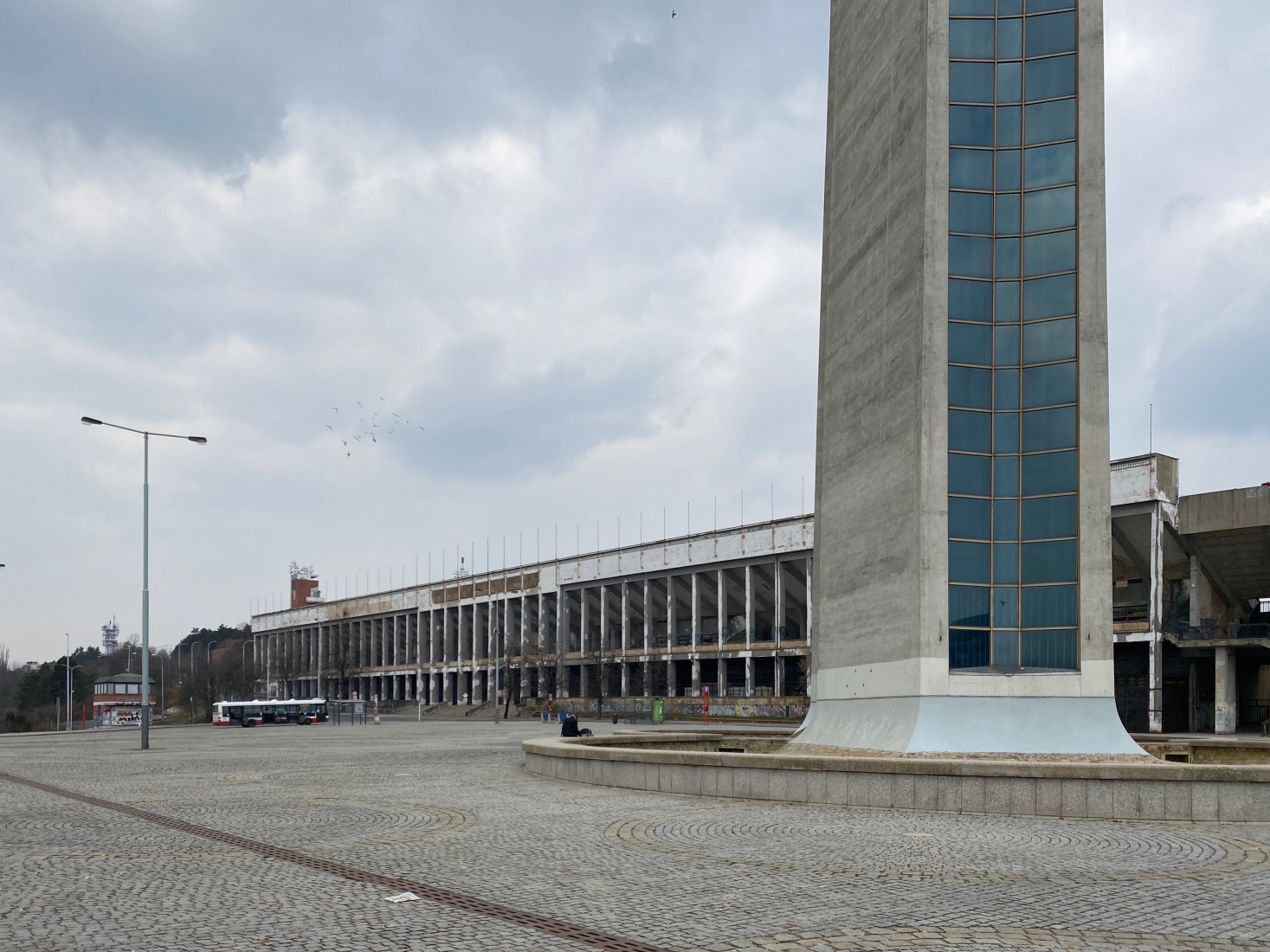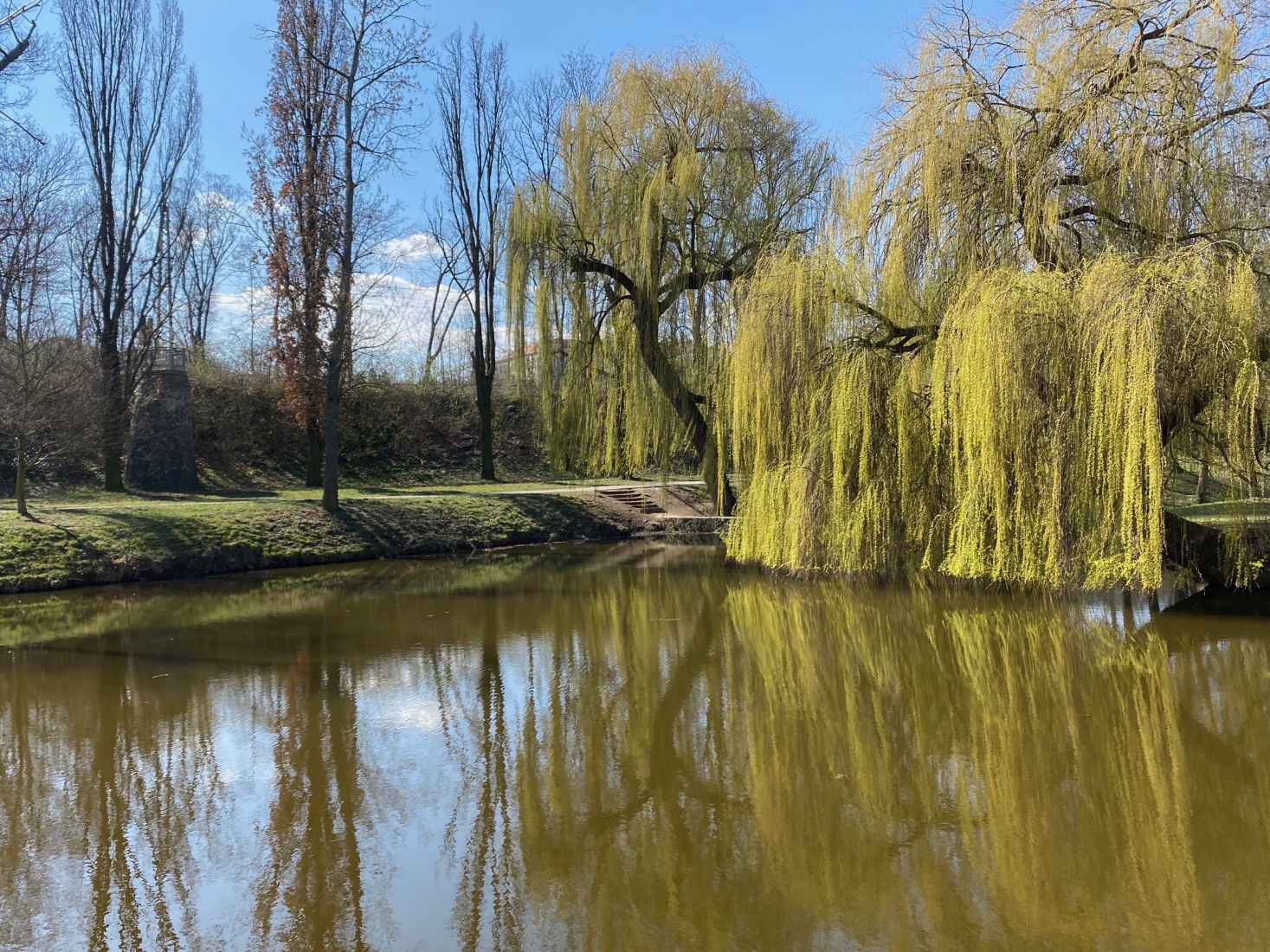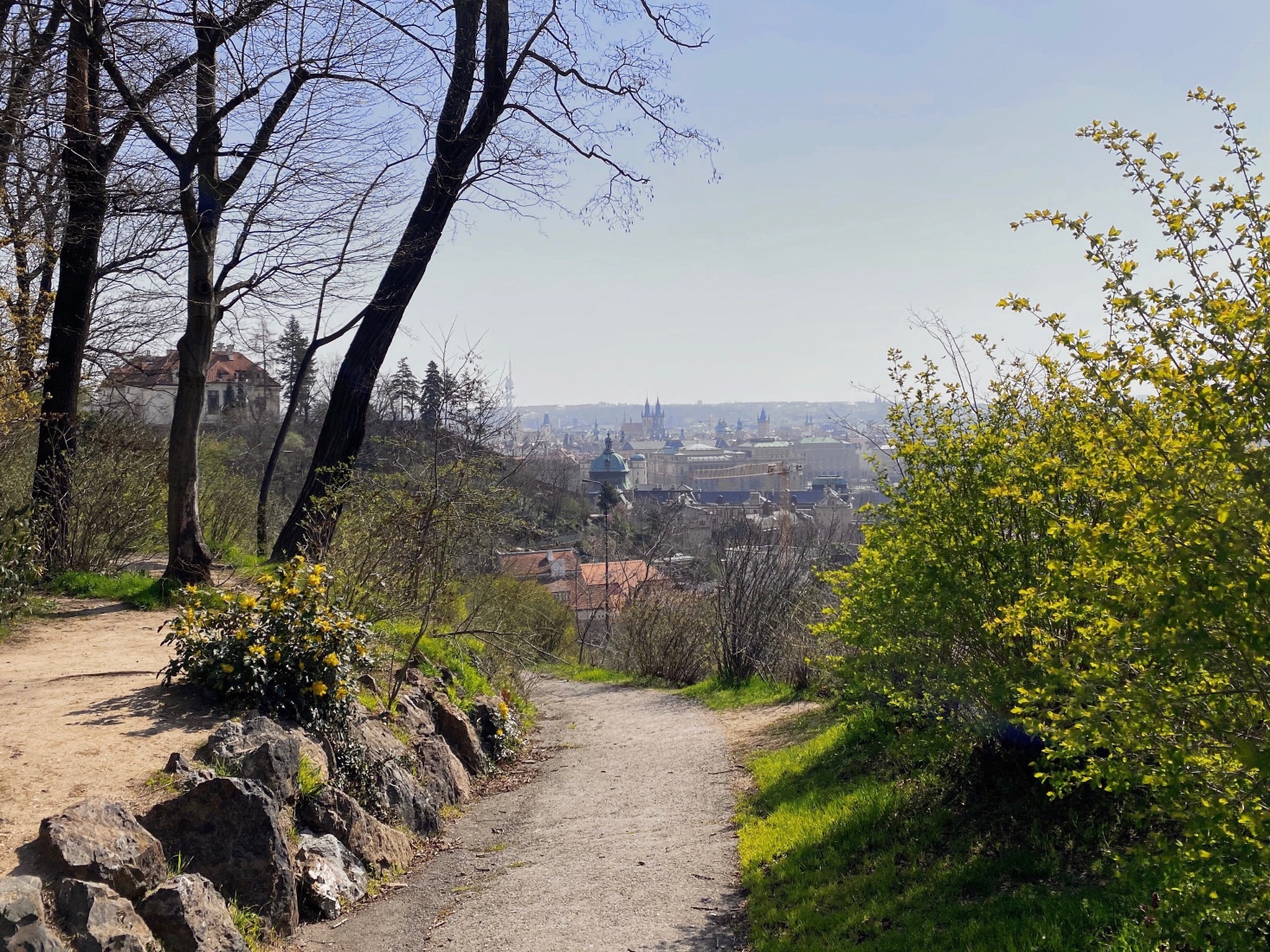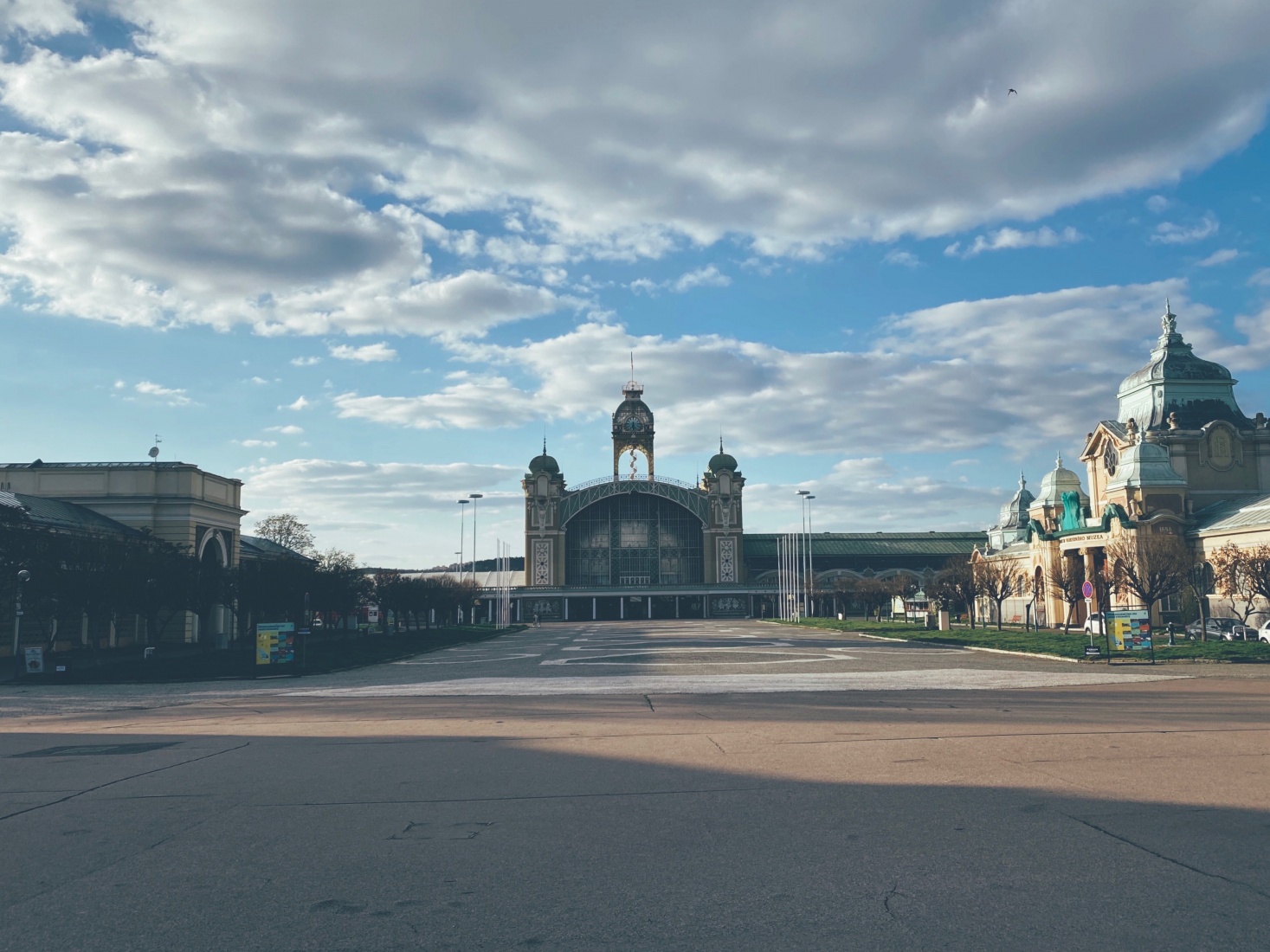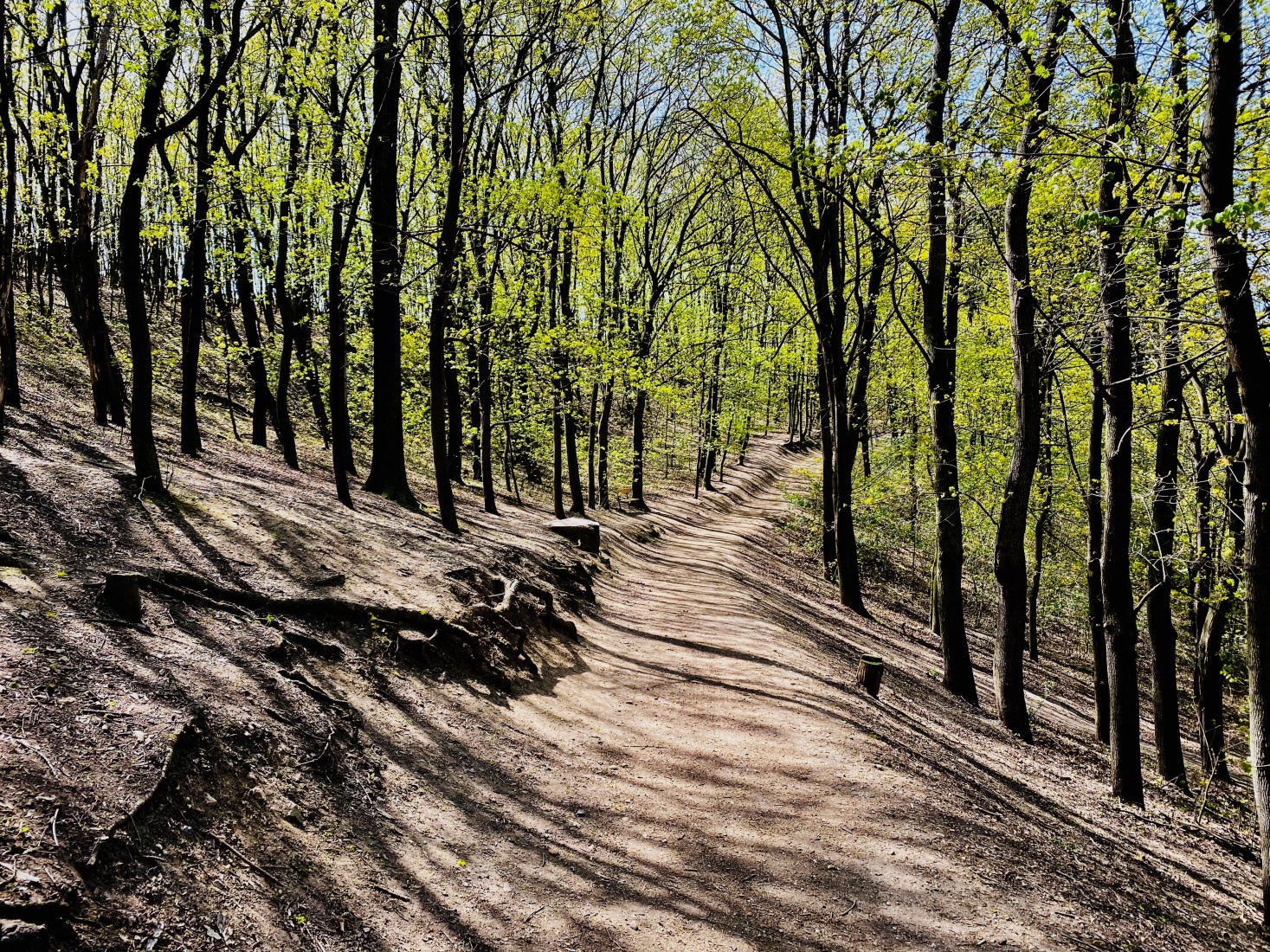Baba (Ruins & Housing Estate)
The name “Baba” refers to a dramatic ridge, topped with fancy villas, that rises above the Vltava River, about 3km (2 miles) north of Prague Castle in the northwestern corner of the city. For years, the closest tram stop to my apartment was called "Podbaba," a name that translates as "Below Baba" (but I never once gave a thought for the "Baba" part of the name). Turns out it’s pretty cool up there.
The most striking object on the ridge is a giant, graffiti-covered wall of an abandoned building that looks a little like a misplaced Gothic church. I’d always thought the structure marked an ancient Celtic burial ground or something (not such a stretch as remains of Celtic settlements have been found north of here along the river), but the building has more pedestrian origins.
It’s apparently what’s left of a summer palace and vineyard from the 17th century. The ruin was given a romantic makeover in the 19th century, when the railroad was built through here to give passengers something to look at through the window. One of the coolest things I learned googling the ruin’s history was that the spot was briefly occupied by marauding Prussian and French troops in 1741 in the “War of Austrian Succession.” That global conflict kicked off in 1740, when Empress Maria Theresa assumed the Austrian-Habsburg throne and greatly rattled the patriarchy (to put it in modern terms). She fought back hard and eventually prevailed.
The other cool thing up here is a small housing development of unique functionalist villas from the 1930s. The Baba Estate is a grouping of around 35 privately-owned, experimental houses built along three parallel streets at the top of the ridge. The estate was modeled after the German Werkbund, and the houses show off those flat roofs and horizontal lines that were so trendy at the time. Unfortunately, the houses are not open to the public and some have been tastelessly restored, but the overall setting remains intact, and the area still feels arty and daring all these decades later.
Petřín Gardens & Strahov Stadium
As you can see from the map, the trek over to the Petřín Gardens takes me out of my immediate neighborhood and I only head here once a week or so as a treat. Before the coronavirus pandemic, the gardens, atop a steep hill just west of Malá Strana, were a favorite among tourists (especially parents with kids). There’s a miniature Eiffel Tower (modeled after the Paris original at one-third the size) as well as a mirror maze and famous rose garden. On my last walk here, the rose garden wasn’t looking too good, but it’s still early in the season. In normal times, you can spare yourself the slog uphill by taking a funicular operated by the Prague Public Transport Authority.
The best part of Petřín, though, has nothing to do with the mirror maze, Eiffel Tower or even the funicular but a scenic walking trail that links the tower to the Strahov Monastery, near Prague Castle, to the north. The trail cuts across the top of a sweeping meadow and orchard, with beautiful views down to the river and Old Town in the backdrop.
Hulking Strahov Stadium stands just behind Petřín to the west and it’s easy to pair a stroll through the gardens with a visit here. The stadium’s capacity is listed as a whopping 250,000 spectators, making it the world’s largest sports venue (on some lists), though these days it serves as little more than a practice pitch for the Sparta Praha soccer club. The stadium was built in the 1920s to showcase the gymnastics events of the Sokol athletic movement, and during the communist period came alive every five years for the international Spartakiad games. The 1960 Spartakiad, the event’s historic high point, featured some 750,000 gymnasts and was attended by around two million people.
In the immediate post-1989 years, the stadium found new life as an occasional concert venue, and famously hosted the Rolling Stones on two occasions (1990 and ’95). I sadly missed both, but I did catch a pretty good Guns N’ Roses concert here in May 1992 in which Axl Rose comically opened the show with the line “Okay, you ex-commie bastards, it’s time to rock and roll!” In 1997, I saw U2 here on their regrettable PopMart (Pop Music) tour, which turned out to be so slick and overproduced that I bailed before the encore and walked home alone that night.
Letná Gardens & Stromovka Park
The walk to over to the Letná Gardens and Stromovka Park feels like cheating. The western entrance to Stromovka, by the now-abandoned Bubeneč train station, is just a few hundred meters from my front door. The two parks are located north of Prague’s Old Town, across the river, and are separated from each other by a narrow strip of pretty housing from the late-19th and early-20th centuries. Though the parks are relatively close to each other, thanks to Prague’s confusing urban geography, they lie in distinctly different neighborhoods (something I learned only after updating the Lonely Planet Prague guidebook). Fun fact: Stromovka is in Bubeneč, while Letná is part of Holešovice (now you know!)
Both parks are beautiful, but in different ways. Letná occupies a high bluff above Prague’s Old Town, and the views here are the best in the city. There are plenty of cycling and rollerblading paths and a hodgepodge of architectural oddities, including a giant, 23m (75ft) -high metronome that works on some days (and others not).
The metronome, notably, occupies the same concrete pedestal that once supported a giant statue of former Soviet dictator Josef Stalin. The story of the Stalin statue could fill an entire blog post, but the whole thing could easily be described as a case of bad timing. The statue was unveiled in 1955, just a few months ahead of then-Soviet leader Nikita Khrushchev’s secret speech to a closed session of the 20th Communist Party Congress in Moscow. In the speech, Khrushchev exposed many of Stalin’s horrific crimes and unleashed a wave of de-Stalinization across the entire Eastern bloc. Prague’s Stalin statue was suddenly hideously out of fashion and was dynamited to rubble seven years later.
The space below the metronome is equally weird. During the communist period it housed a nuclear-fallout shelter, and then in the years after 1989, a pirate radio station. Most recently, the space was used as a bar and techno-music club, called appropriately “Stalin.” The club was closed down last year over concerns that the space might collapse, and it’s not sure what will happen once fears over coronavirus ease and the city returns to near-normal.
That was more about Letná than I intended to write. To be honest, most people come here mainly to have a beer at the summer beer garden, and that’s usually my reason too. The beer garden, like all other public drinking spots, is closed now for the duration, but you can still buy a take-away beer from a little kiosk on site.
As good as Letná is, Stromovka might even be better. The sprawling park, which was once used as a royal hunting ground, occupies an immense geographic indentation (like a big soup bowl) that stretches north toward the Vltava River and Prague Zoo. Floods that struck the city in 2002 ravaged relatively low-lying Stromovka, and in the years since, the city has lavished money and attention on the park to restore and improve it. These days, it’s a little piece of urbanized Eden, with hiking and cycling trails, a bridle path, playgrounds, grilling areas, a swimming pond and lots of hidden, tucked-away benches and gardens. The Vltava, by this point, is surprisingly rustic, and a makeshift walking trail, that few people ever use, hugs the bank.
Lysolaje & Šárka Nature Park
The big find for me during this coronavirus lockdown has been the beautiful Lysolaje & Šárka Nature Park, located 2km (1 mile) west of my apartment. Several years ago, I would cycle the trails here with friends Stewart, Dave and Grant (you can read about those rides here on Grant's old bike blog), but it had been a long time since I poked around the endless hiking paths and roadways that follow the Šárka creek back from where it empties into the Vltava river all the way west to the bizarre rock formations of the Divoká Šárka park, near Prague Airport.
For being so close to the center of the city -- relatively speaking -- the park is much quieter during the day than Letná or Stromovka. The paths here are often empty. That’s a comfort in the age of social distancing. The Czech government recently relaxed the mandatory mask requirement for cyclists and joggers, and I now occasionally feel unsafe walking through crowded parks, as mask-less cyclists and joggers stream by (though I recognize the risk of transmission is low). It’s still rare to find a jogger along Šárka creek, and easy to step off the path if you see one to allow safe passage.
Readers: Scroll past the map for more photos, including pics of the abandoned center of Prague.
*While researching this story, I noticed there's already an outfit called the "Prague Walker" (www.praguewalker.com). Sorry guys, didn't mean to step on your turf, so to speak.
